BI.BLE, Biei (美瑛), Hokkaido (北海道), Japan, 2019.06.21

Day 7 (3/5).
Driving north from Farm Tomita in Nakafurano (中富良野) brought us to Biei (美瑛町) in half an hour. We followed the GPS to look for Bi.Ble, a French restaurant that caught our attention while we researched for the trip. Recommended by a guidebook, we were attracted by Bi.Ble’s dishes made from local ingredients, its pleasant timber interiors, and its picturesque setting surrounded by wheat fields. The entire compound is consisted of four buildings: a culinary school and a staff/student dormitory occupying two former school buildings, a new one-storey hotel and a new restaurant facing a wheat field. With the aid from GPS and Google Map, we didn’t have trouble finding the place and arrived at Bi.Ble at around 11:30am. We didn’t make a reservation, and were lucky to get the last table available. Other than the seafood of Shiretoko, dining at Bi.Ble to sample some of the best ingredients from Furano and Biei turned out to be one of the most remarkable meals we had throughout the trip.
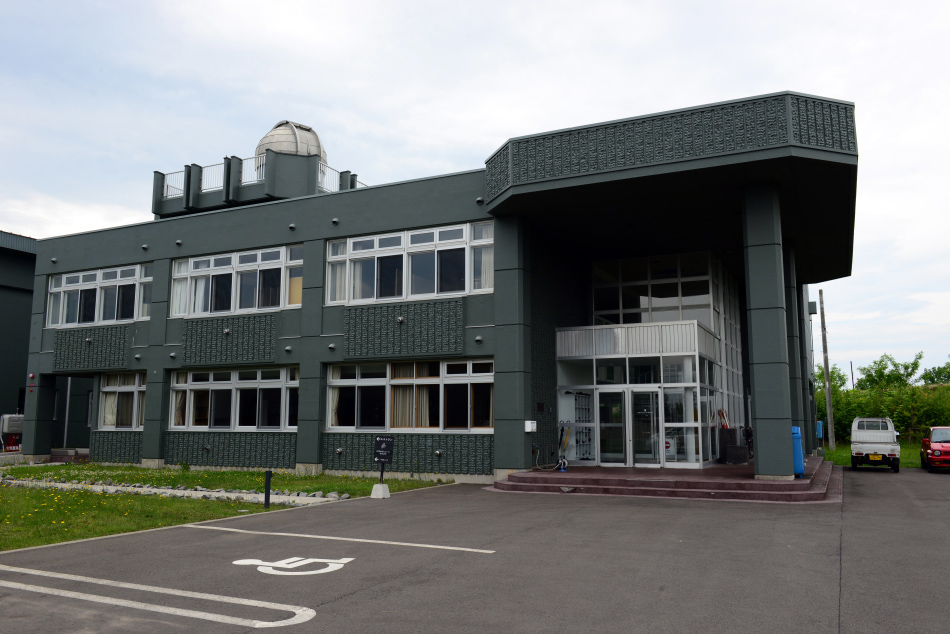 Occupying the former Hokuei Elementary School, the Ecole Hoteliere Etude is a culinary school affiliated with Bi.Ble Restaurant.
Occupying the former Hokuei Elementary School, the Ecole Hoteliere Etude is a culinary school affiliated with Bi.Ble Restaurant.
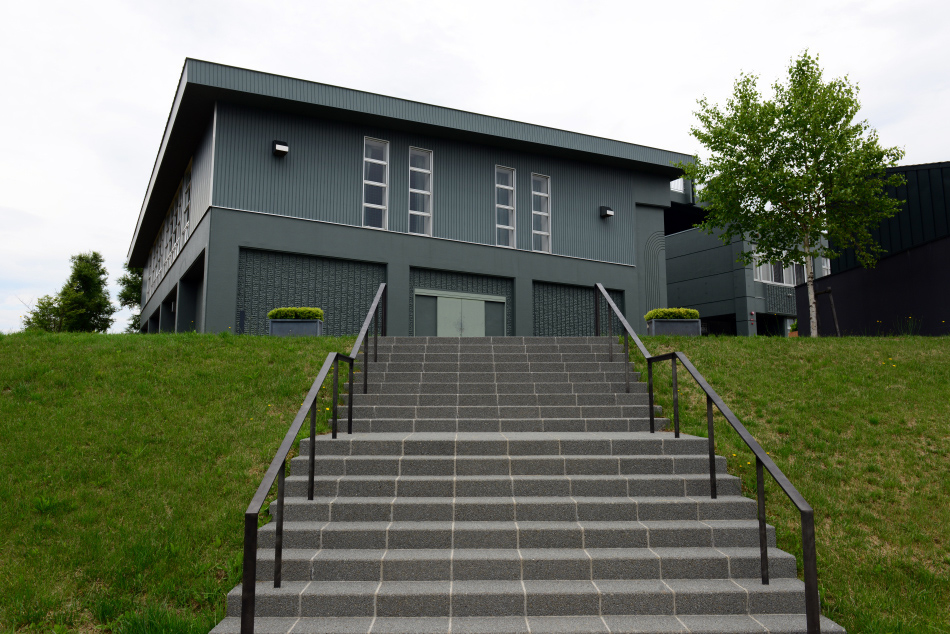 It is green everywhere in Biei, even the school building.
It is green everywhere in Biei, even the school building.
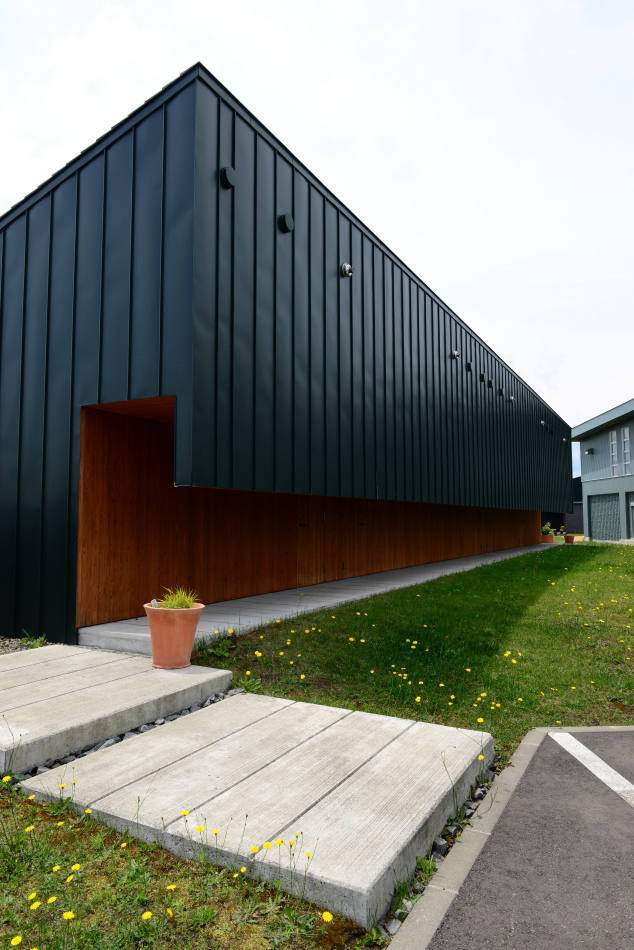 Across from the school building stands a minimalist building cladded with green metal panels. This new addition to the school complex serves as a hotel with several guestrooms facing the wheat field.
Across from the school building stands a minimalist building cladded with green metal panels. This new addition to the school complex serves as a hotel with several guestrooms facing the wheat field.
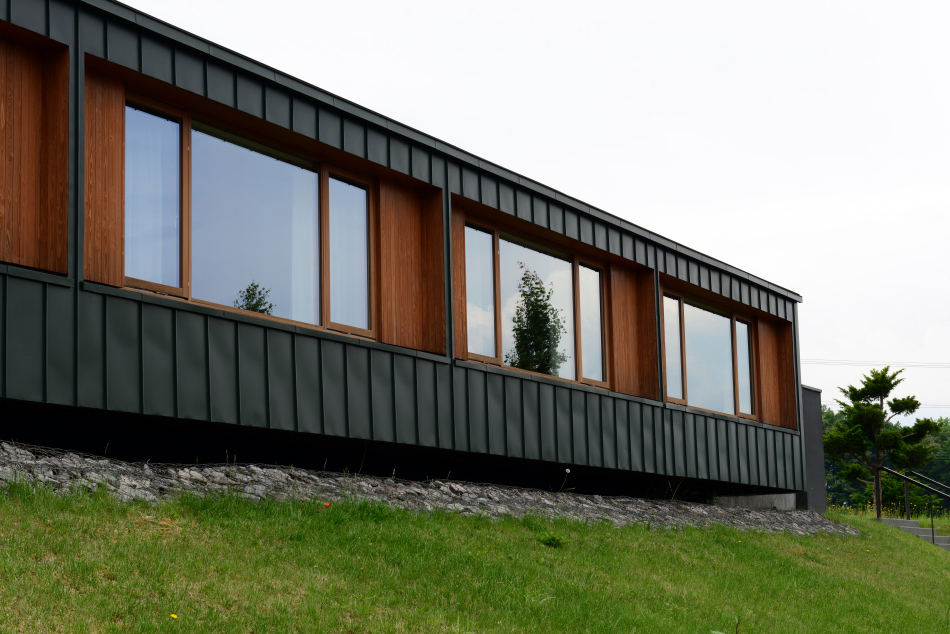 Each hotel room has a decent window.
Each hotel room has a decent window.
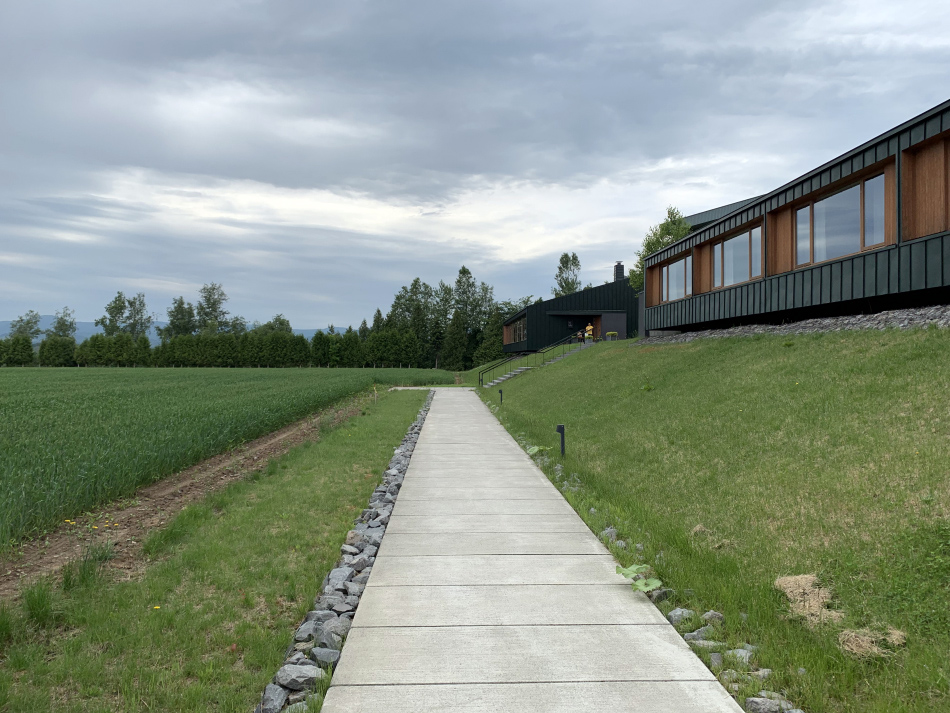 Each room enjoys the view of the picturesque wheat field below.
Each room enjoys the view of the picturesque wheat field below.
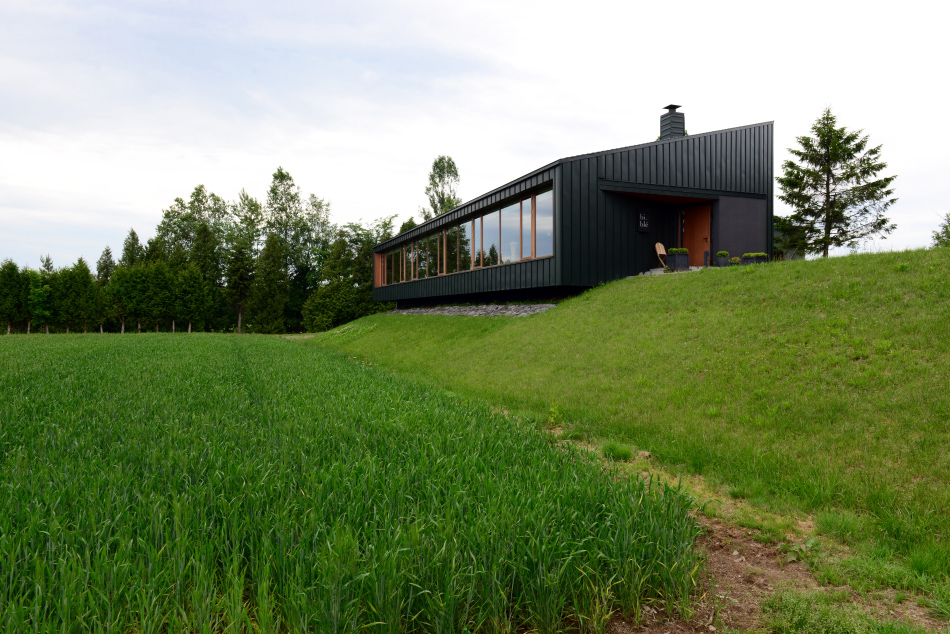 Bi.Ble Restaurant is located at the far end of the compound.
Bi.Ble Restaurant is located at the far end of the compound.
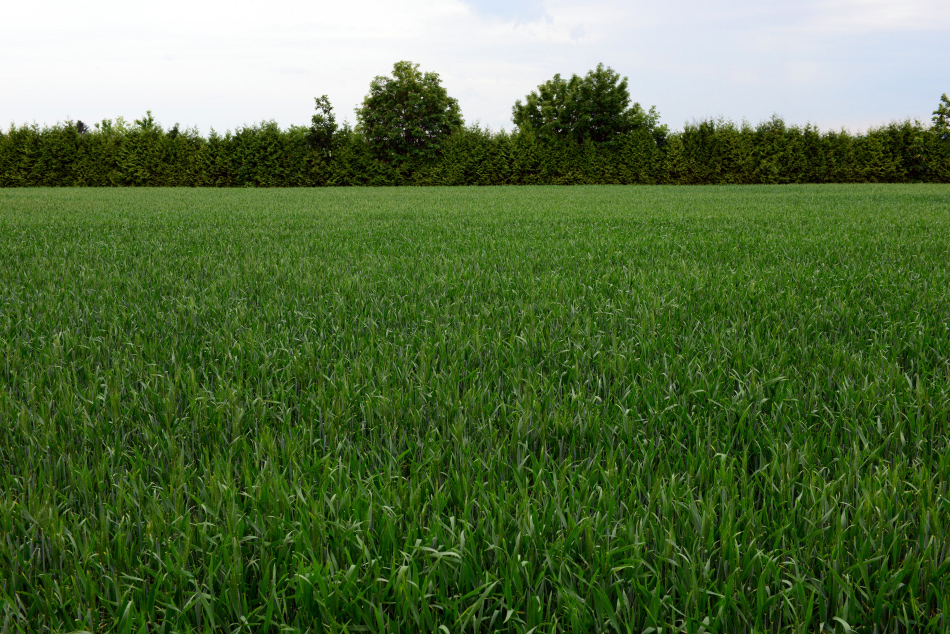 Biei is well known for its high quality wheat and flour. In July, the wheat would turn yellow. By August, the wheat would be ready for harvest.
Biei is well known for its high quality wheat and flour. In July, the wheat would turn yellow. By August, the wheat would be ready for harvest.
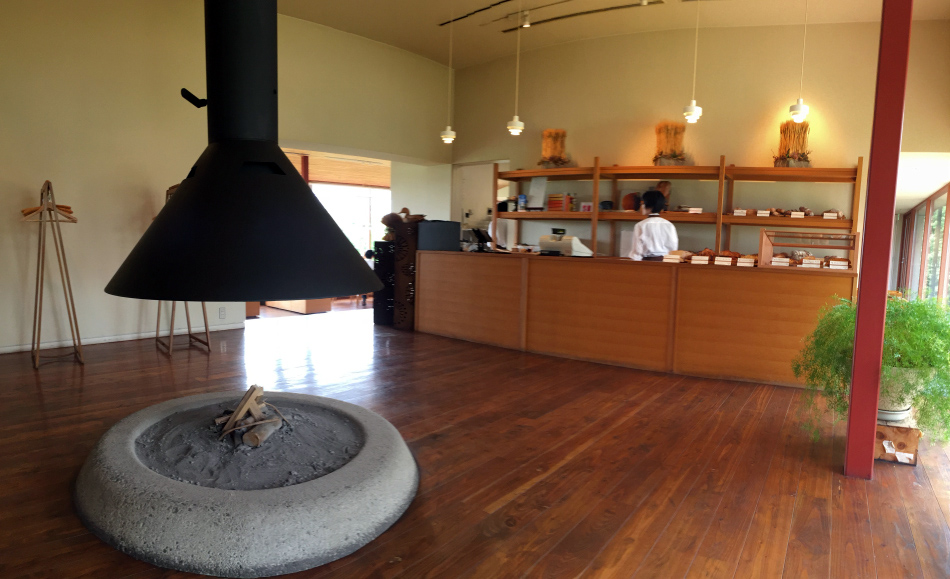 The first things that greeted our arrival at Bi.Ble was the famous bakery and its fireplace.
The first things that greeted our arrival at Bi.Ble was the famous bakery and its fireplace.
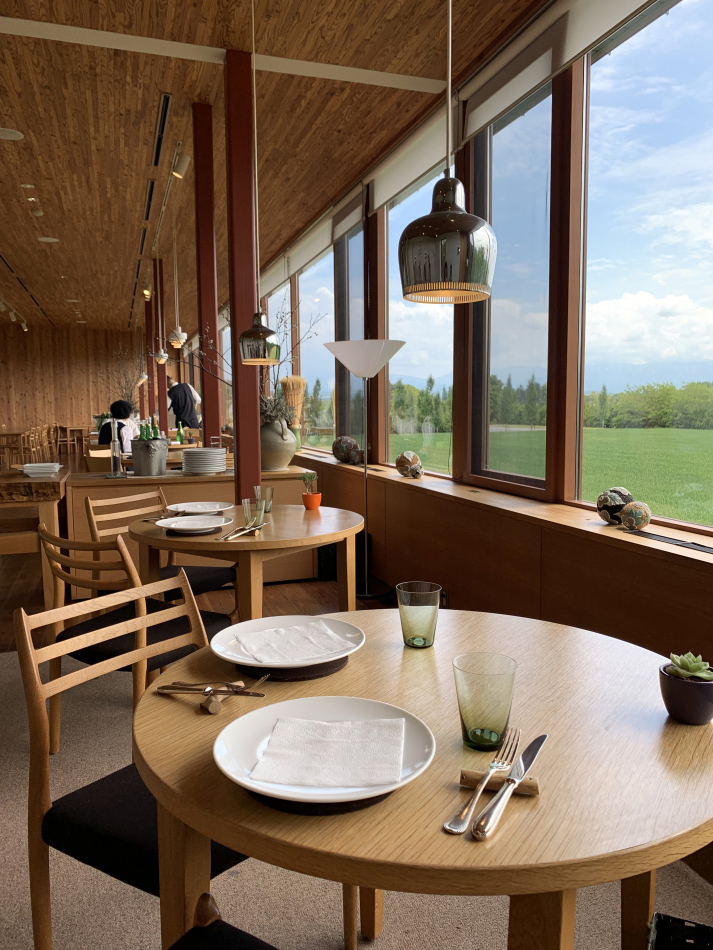 Almost all tables in the restaurant had been reserved. Came without booking, we arrived just in time to sit down at the last available table facing the wheat field.
Almost all tables in the restaurant had been reserved. Came without booking, we arrived just in time to sit down at the last available table facing the wheat field.
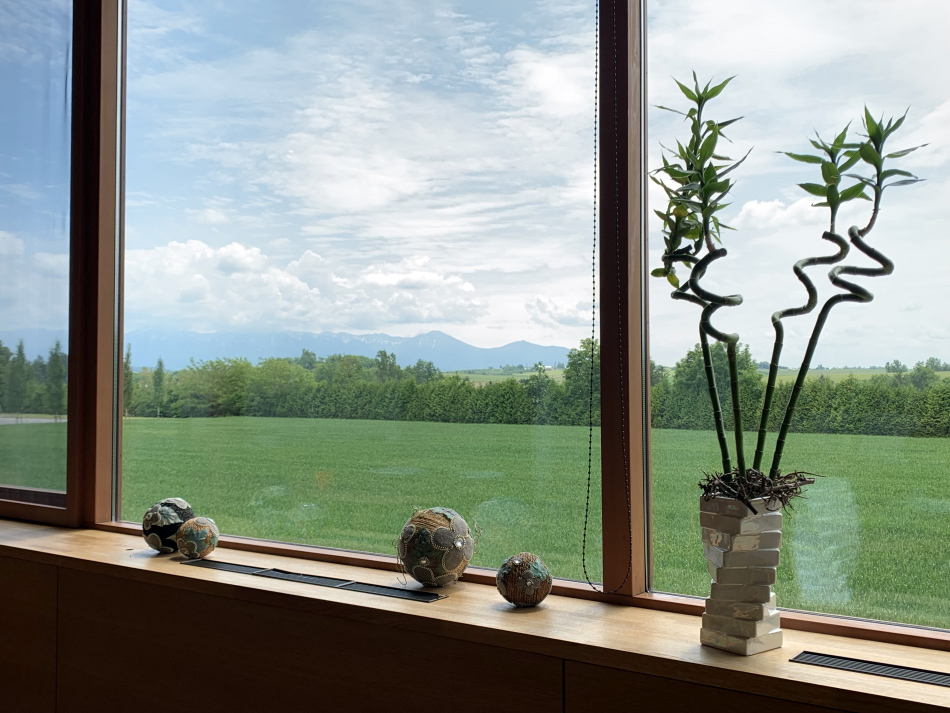 Beyond the wheat field lies the distant volcanic mountain ranges of Daisetsuzan and Tokachi, whose ashes produce the highly fertile soil of the area.
Beyond the wheat field lies the distant volcanic mountain ranges of Daisetsuzan and Tokachi, whose ashes produce the highly fertile soil of the area.
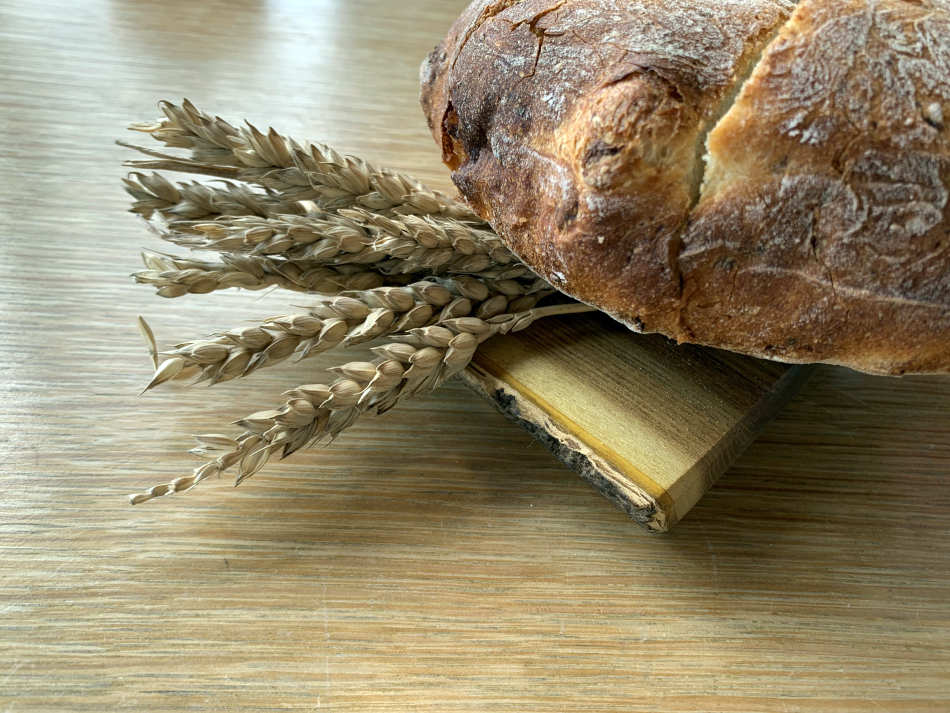 Perhaps the easiest way to appreciate the taste of Biei is to sample the simplest and purest ingredient of all, freshly baked bread made from the wheat of Biei.
Perhaps the easiest way to appreciate the taste of Biei is to sample the simplest and purest ingredient of all, freshly baked bread made from the wheat of Biei.
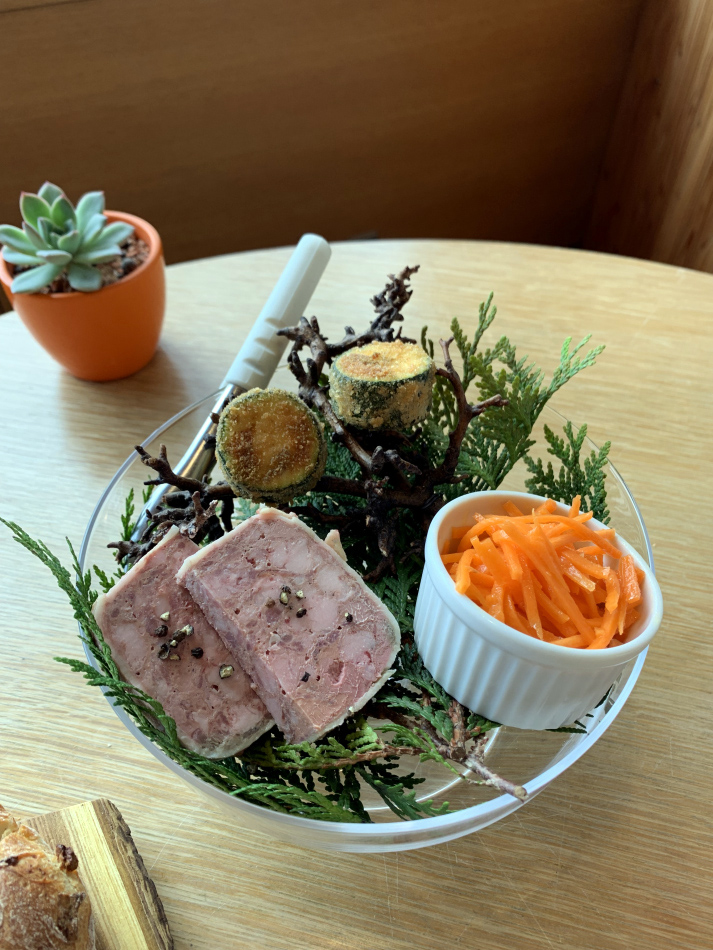 Appetizers made with local pork and produces decorated with a touch of nature.
Appetizers made with local pork and produces decorated with a touch of nature.
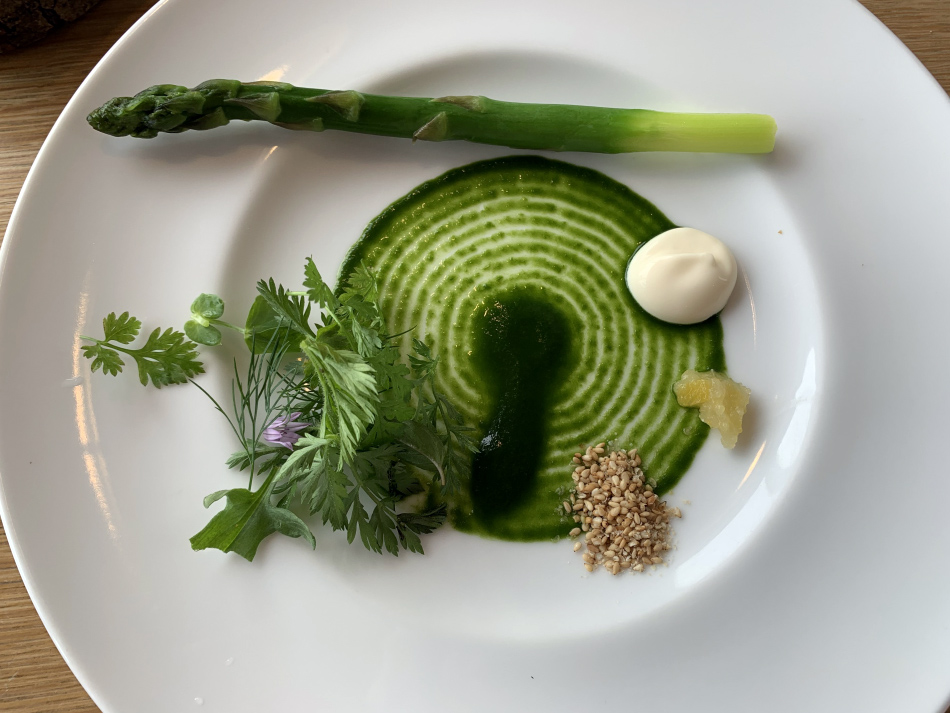 The dining experience at Bi.Ble was a fusion of French culinary techniques and Japanese aesthetics with the palette of Hokkaido.
The dining experience at Bi.Ble was a fusion of French culinary techniques and Japanese aesthetics with the palette of Hokkaido.
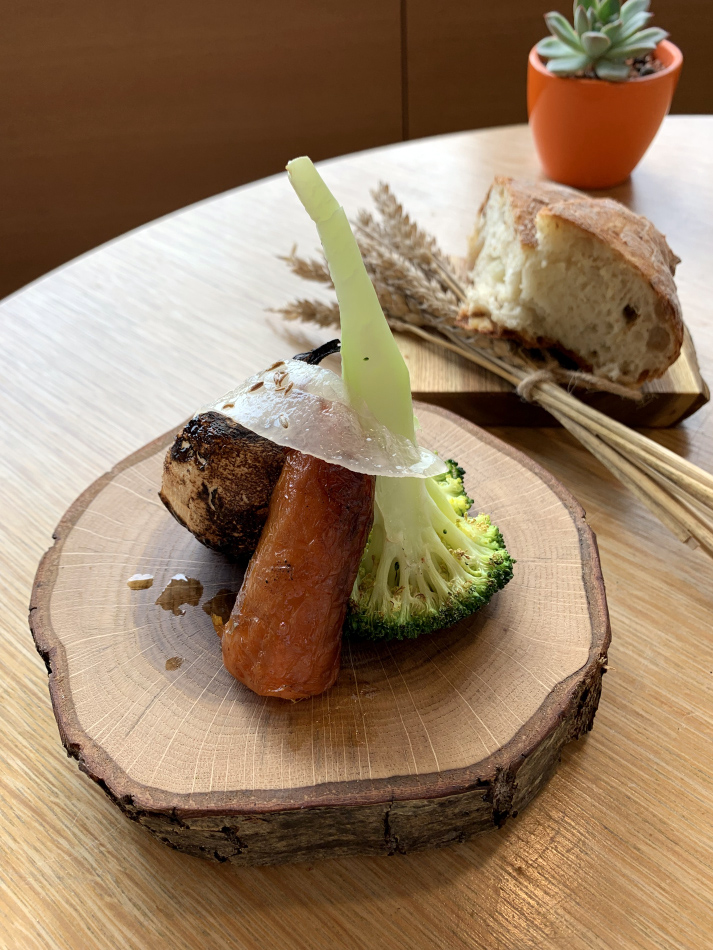 From the local volcanic soil, even the most ordinary ingredients like carrot and potato tasted better.
From the local volcanic soil, even the most ordinary ingredients like carrot and potato tasted better.
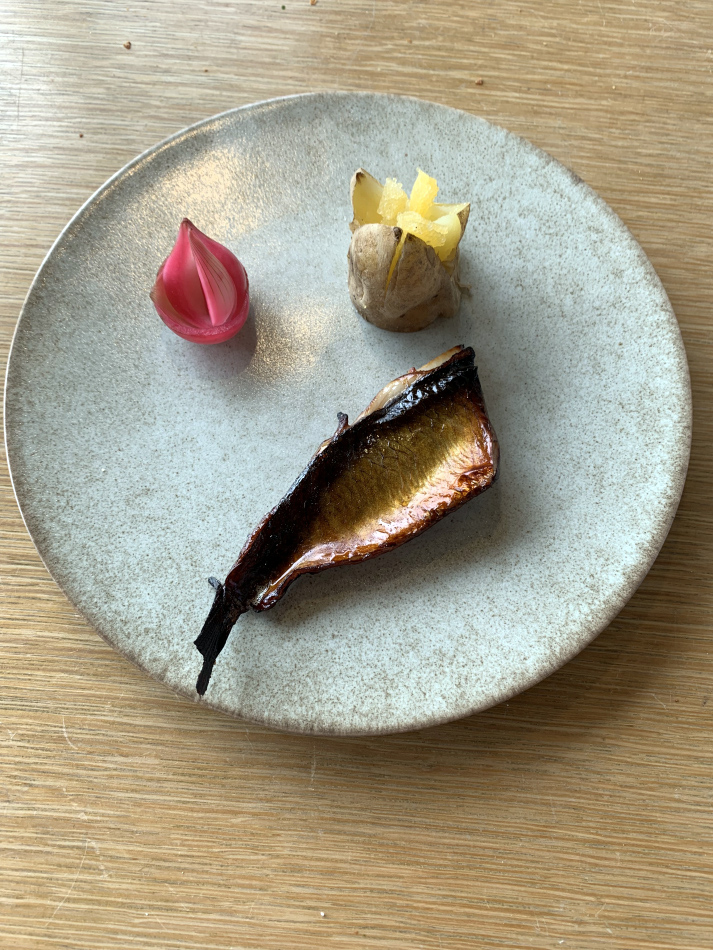 Each dish was like a minimalist painting to us.
Each dish was like a minimalist painting to us.
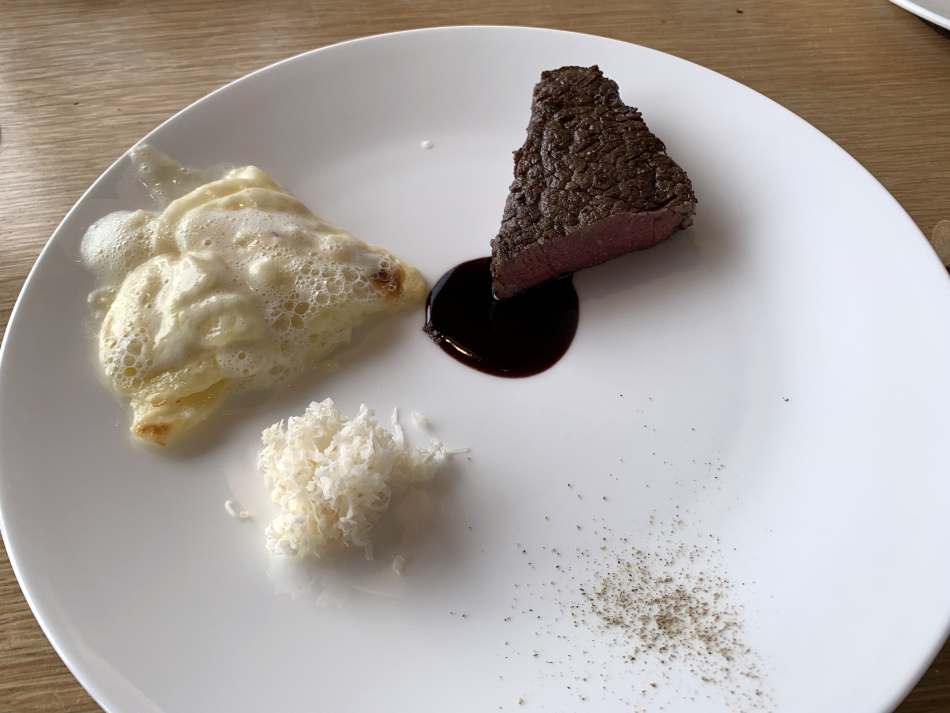 Each dish came in small portions, but it ended up quite a filling meal after all the courses.
Each dish came in small portions, but it ended up quite a filling meal after all the courses.
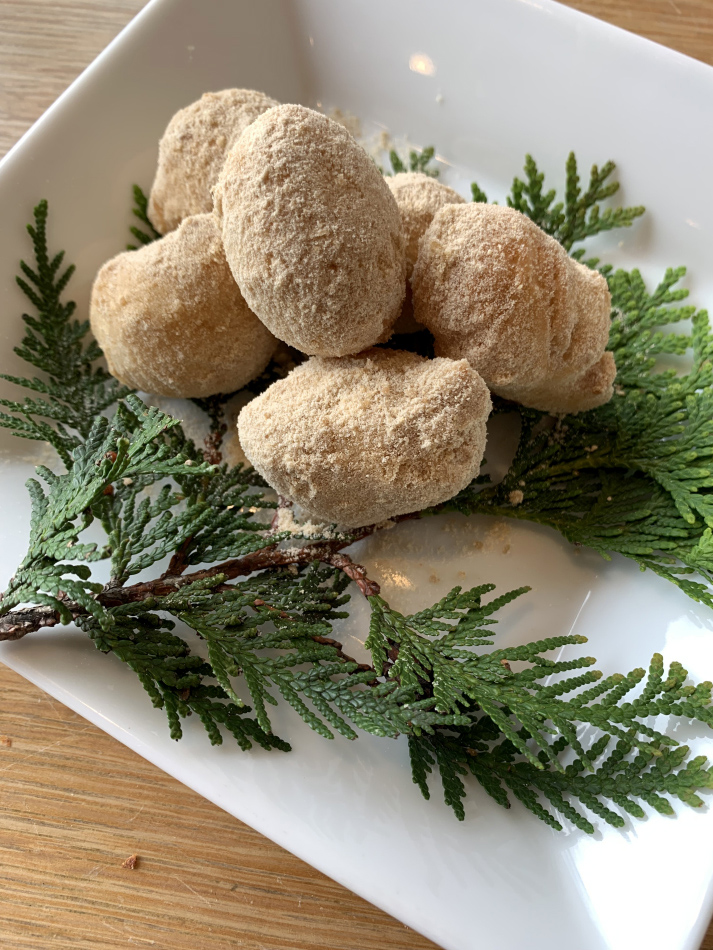 A fine dessert to ended a special meal.
A fine dessert to ended a special meal.
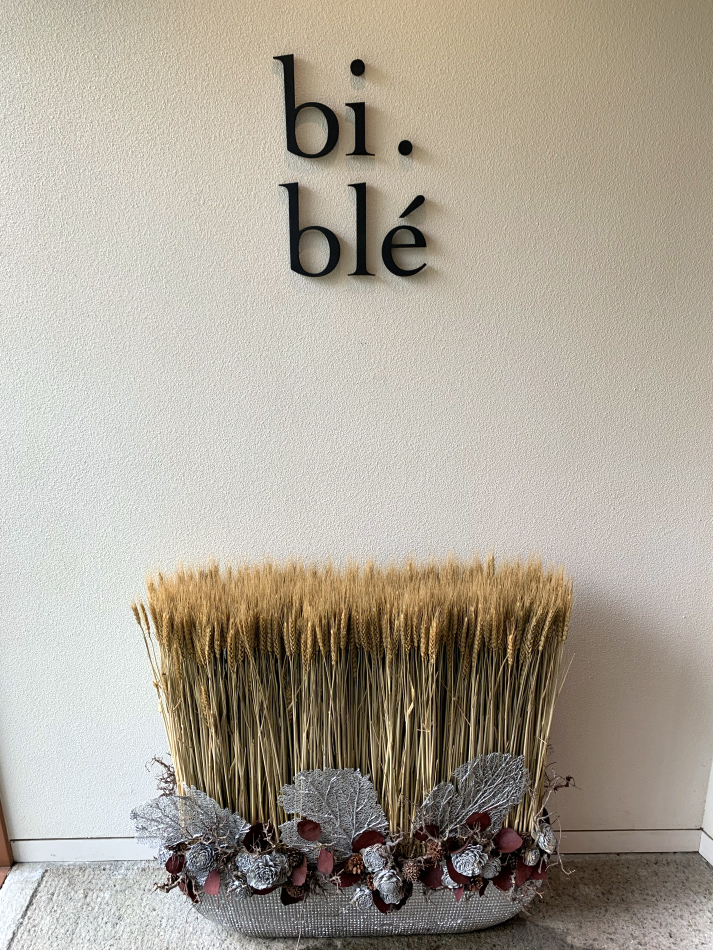 After visiting the lavender farms and floral fields of Furano, Bi.ble has given us another brilliant way to appreciate what the unique landscape of Central Hokkaido has to offer.
After visiting the lavender farms and floral fields of Furano, Bi.ble has given us another brilliant way to appreciate what the unique landscape of Central Hokkaido has to offer.
* * *
Introduction
HOKKAIDO ROAD TRIP, Hokkaido (北海道)
Day 1 – from Tokyo to Shiretoko Peninsula
Day 1.1 TSUKIJI OUTER MARKET (築地場外市場)
Day 1.2 ARRIVAL IN SHIRETOKO, Utoro (ウトロ)
Day 2 – Utoro
Day 2.1 SHIRETOKO FIVE LAKES (知床五湖)
Day 2.2 UTORO FISHERMAN’S WIVES CO-OPERATIVE DINER (ウトロ漁協婦人部食堂)
Day 2.3 FUREPE FALLS (フレペの滝)
Day 3 – Rausu
Day 3.1 RUSA FIELD HOUSE (ルサフィールドハウス)
Day 3.2 JUN NO BANYA (純の番屋)
Day 4 – Rausu
Day 4.1 MOUNT RAUSU (羅臼岳)
Day 4.2 FANTASTIC ORCAS, Nemuro Strait (根室海峡)
Day 5 – Lake Mashu & Lake Akan
Day 5.1 SUNRISE AT LAKE MASHU (摩周湖)
Day 5.2 MOUNT MASHU TRAIL (摩周岳) , Teshikaga (弟子屈)
Day 5.3 SILENT NIGHT AT LAKE AKAN (阿寒湖)
Day 6 – On the road from Lake Akan to Furano
Day 6.1 FISHERMEN BELOW MISTY OAKAN (雄阿寒岳), Lake Akan (阿寒湖)
Day 6.2 TREATS OF OBIHIRO (帯広), Tokachi (十勝)
Day 6.3 ARRIVING IN FURANO (富良野)
Day 7 Furano & Biei
Day 7.1 LAVENDER BUDS, Nakafurano (中富良野)
Day 7.2 FARM TOMITA (ファーム富田), Nakafurano (中富良野)
Day 7.3 BI.BLE, Biei (美瑛)
Day 7.4 PATCHWORK ROAD & PANORAMA ROAD, Biei (美瑛)
Day 7.5 NINGLE TERRACE (ニングルテラス)
Day 8 – from Furano to Otaru
Day 8.1 CHURCH ON THE WATER (水の教会), Hoshino Resorts Tomamu (星野リゾート トマム)
Day 8.2 HILL OF THE BUDDHA (頭大仏), Makomanai Takino Cemetery (真駒内滝野霊園)
Day 8.3 SEAFOOD, CANAL, & HISTORY, Otaru (小樽)
Day 8.4 RAINY NIGHT IN OTARU, Otaru (小樽)
Day 9 – Yochi & Sapporo
Day 9.1 NIKKA YOICHI DISTILLERY (余市蒸溜所), Yoichi (余市)
Day 9.2 SOUP CURRY NIGHT
Day 10 – Sapporo
10.1 OKKAIDO SHRINE (北海道神宮 )
10.2 MORIHICO COFFEE (森彦珈琲本店)
10.3 KITAKARO SAPPORO HONKAN (北菓楼札幌本館)
10.4 SATURDAYS CHOCOLATE
10.5 GOTSUBO OYSTER BAR(五坪)
10.6 MOUNT MOIWA (藻岩山) & RAMEN HARUKA (ラーメン悠)
Day 11 – Sapporo
11.1 FORMER HOKKAIDO GOVERNMENT OFFICE (北海道庁旧本庁舎)
11.2 RED STAR & GENGKIS KHAN, Sapporo Beer Museum (サッポロビール株式会社)
DAY 5 (1/5): CITY IN THE MOUNTAINS, Hida-Takayama (飛騨高山), Gifu Prefecture (岐阜県), Japan, 2018.05.29

Surrounded by mountains in the Gifu Prefecture, Hida-Takayama (飛騨高山) or simply Takayama (高山) is a delightful destination for all tourists who have make the effort coming to the central mountainous region of Honshu. Takayama serves well as the base for travelers to visit the surrounding attractions, from Kamikochi and the Japanese Alps to the east, to the gassho-zukuri villages of Shirakawa-go (白川郷) and Gokayama (五箇山) to the north. Takayama is best known for its morning market at Miyagawa River (宮川), high quality sake and world famous Hida beef, but the most remarkable thing for most visitors is how well the historic Sanmachi Suji District (三町筋) has been preserved. Wandering in the historic heart of Takayama makes us felt like going back in time to the Edo Period (1600-1868, 江戸時代), when the city was a wealthy and prosperous merchant city. On the other hand, a visit to the castle ruins at Shiroyama Park (城山公園) on the mountain next to the historical centre reminded us the city’s shogunate past in the Sengoku Period (1467-1568, 戦国時代).
 We arrived at Takayama from Shirahone Onsen at around 12:30pm. Our hotel J-Hoppers Guesthouse was just a few minutes away from the railway station.
We arrived at Takayama from Shirahone Onsen at around 12:30pm. Our hotel J-Hoppers Guesthouse was just a few minutes away from the railway station.
 Our tatami room was simple and clean, with a window overlooking the city’s post office across the street.
Our tatami room was simple and clean, with a window overlooking the city’s post office across the street.
 Just a short walk from J-Hoppers brought us to Sanmachi Suji (三町筋), the historic district that most tourists linger when they come to Takayama. Most tourists wandered around Sannomachi Street, the atmospheric street flanked by old timber houses.
Just a short walk from J-Hoppers brought us to Sanmachi Suji (三町筋), the historic district that most tourists linger when they come to Takayama. Most tourists wandered around Sannomachi Street, the atmospheric street flanked by old timber houses.
 In the charming historic district, even the street gutter can provide a lovely picture.
In the charming historic district, even the street gutter can provide a lovely picture.
 One of the most enjoyable activities to wander around Sanmachi Suji District is to sample the diverse local snacks, from beef croquettes to mochi. The rice cracker of Senbeidou (手焼煎餅堂) on Sannomachi Street is also popular with tourists.
One of the most enjoyable activities to wander around Sanmachi Suji District is to sample the diverse local snacks, from beef croquettes to mochi. The rice cracker of Senbeidou (手焼煎餅堂) on Sannomachi Street is also popular with tourists.
 At Sanmachi Suji, one of the most popular shop we encountered was Ohnoya Paste Shop (大のや醸造). Ohnoya had been around in Takayama for the past 250 years selling soy sauce (醤油) and miso paste (味噌).
At Sanmachi Suji, one of the most popular shop we encountered was Ohnoya Paste Shop (大のや醸造). Ohnoya had been around in Takayama for the past 250 years selling soy sauce (醤油) and miso paste (味噌).
 At Ohnoya, we bought a bag of aka miso (red miso 赤味噌), a bottle of yonen (4 years) shoyu, a soy sauce made from aka miso, and a bottle of kibiki shoyu, a special soy sauce made with a traditional recipe.
At Ohnoya, we bought a bag of aka miso (red miso 赤味噌), a bottle of yonen (4 years) shoyu, a soy sauce made from aka miso, and a bottle of kibiki shoyu, a special soy sauce made with a traditional recipe.
 A poster on a shopfront reminded us the famous Takayama Matsuri or Takayama Festival. Held annually in spring and autumn, Takayama Festival (高山祭) is often considered one of Japan’s three most beautiful festivals.
A poster on a shopfront reminded us the famous Takayama Matsuri or Takayama Festival. Held annually in spring and autumn, Takayama Festival (高山祭) is often considered one of Japan’s three most beautiful festivals.
 During the Takayama Festival, the city’s splendid festival floats (yatai) would be paraded throughout the historic streets. Throughout the year, the floats are stored in special storehouses scattered across the old town.
During the Takayama Festival, the city’s splendid festival floats (yatai) would be paraded throughout the historic streets. Throughout the year, the floats are stored in special storehouses scattered across the old town.
 On Sannomachi Street, we walked by the beautiful gate of Fujii Folk Museum, a small museum with exhibits of artefacts and local art pieces.
On Sannomachi Street, we walked by the beautiful gate of Fujii Folk Museum, a small museum with exhibits of artefacts and local art pieces.
 Before heading up to the Shiroyama Park (城山公園), we stopped by a sweet bun shop.
Before heading up to the Shiroyama Park (城山公園), we stopped by a sweet bun shop.
 The sweet buns looked pretty and tasted delicious.
The sweet buns looked pretty and tasted delicious.
 While wandering the historic centre, we passed by the interesting Takayama Shōwa-kan Museum (高山昭和館). Named as one of Takayama’s top attractions in Lonely Planet, the museum showcased objects dated back from the mid 1950’s to 1960’s Japan.
While wandering the historic centre, we passed by the interesting Takayama Shōwa-kan Museum (高山昭和館). Named as one of Takayama’s top attractions in Lonely Planet, the museum showcased objects dated back from the mid 1950’s to 1960’s Japan.
 What looked like an antique shop across from Takayama Shōwa-kan Museum (高山昭和館) was in fact a hairdresser (バーバー文助) decorated in a vintage look.
What looked like an antique shop across from Takayama Shōwa-kan Museum (高山昭和館) was in fact a hairdresser (バーバー文助) decorated in a vintage look.
 On our way to Shiroyama Park (城山公園), we passed by another old miso shop (丸五味噌(醤油)屋).
On our way to Shiroyama Park (城山公園), we passed by another old miso shop (丸五味噌(醤油)屋).
 After our walk up the Shiroyama Park and Higashiyama Walking Course (東山遊歩道), we finally reached the beautiful Miyagawa River (宮川).
After our walk up the Shiroyama Park and Higashiyama Walking Course (東山遊歩道), we finally reached the beautiful Miyagawa River (宮川).
 The hotel staff at J-Hoppers recommended us to check out the 1200-year-old ginkgo tree (銀杏) at Kokubunji Temple.
The hotel staff at J-Hoppers recommended us to check out the 1200-year-old ginkgo tree (銀杏) at Kokubunji Temple.
 The 37m tree is a designated natural treasure.
The 37m tree is a designated natural treasure.
 Hida Kokubunji Temple (飛騨国分寺) was originally built in 764 AD by Emperor Shoumu. Over the years, the structures had been reconstructed. The three-storey pagoda was rebuilt in 1821 to replace the earlier five-storey pagoda that was itself a replacement of the original seven-storey pagoda.
Hida Kokubunji Temple (飛騨国分寺) was originally built in 764 AD by Emperor Shoumu. Over the years, the structures had been reconstructed. The three-storey pagoda was rebuilt in 1821 to replace the earlier five-storey pagoda that was itself a replacement of the original seven-storey pagoda.
 Together with the pagoda, the bell tower at Kokubunji Temple is also a fascinating old timber structure.
Together with the pagoda, the bell tower at Kokubunji Temple is also a fascinating old timber structure.
DAY 1 (1/3): TSUKIJI OUTER MARKET (築地場外市場), Tokyo, Japan, 2018.05.25
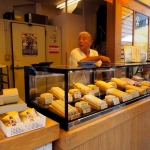
Walking out of Tsukiji Metro Station, our attention immediately fell to the monumental Tsukiji Honganji Temple (築地本願寺) across the street. Design in mixed styles including Indian Buddhist, Islamic and Hindu, as well as Western Neoclassical influences, architect and Tokyo University professor Chuta Ito intended to steer away from the traditional East Asian timber architectural traditions. Instead, he traveled to India numerous times to visit temples, and brought home design touches from the birthplace of Buddhism. The 1923 Great Kanto Earthquake destroyed the temple’s predecessor. The current Honganji Temple was built in the 1930s, and soon became a prominent Jodo Shinshu (浄土真宗) temple in Tokyo. We climbed the main stair and entered the main hall through an elegant doorway with beautiful stain-glass transom windows overhead. We were surprised to see a full house of audience in the cathedral-like main hall (even with an organ). Apparently there was a concert going on. A female vocalist was performing some kind of Western opera inside the temple.
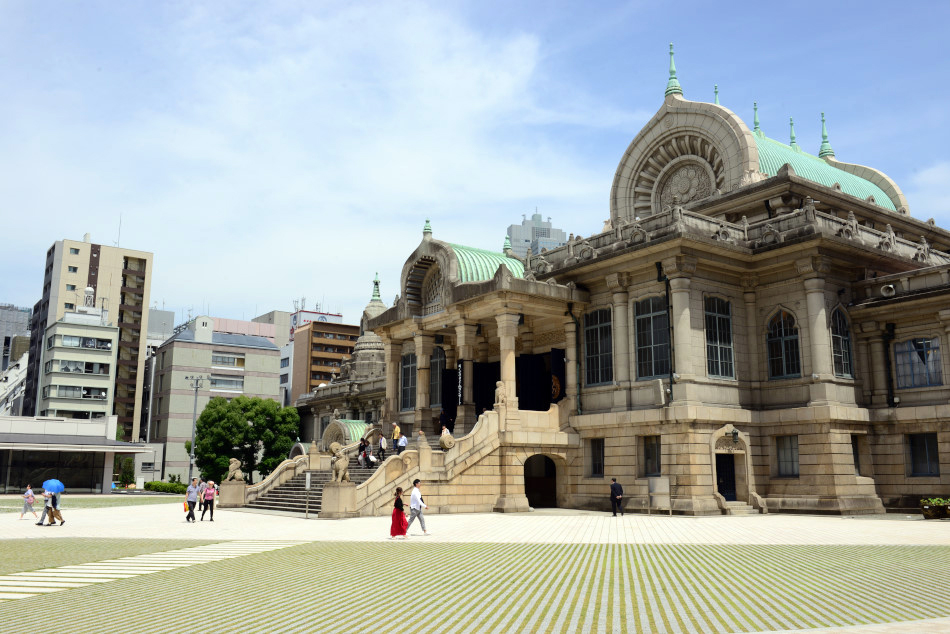 The unique facade of Tsukiji Honganji Temple hardly revealed its true identity of to us.
The unique facade of Tsukiji Honganji Temple hardly revealed its true identity of to us.
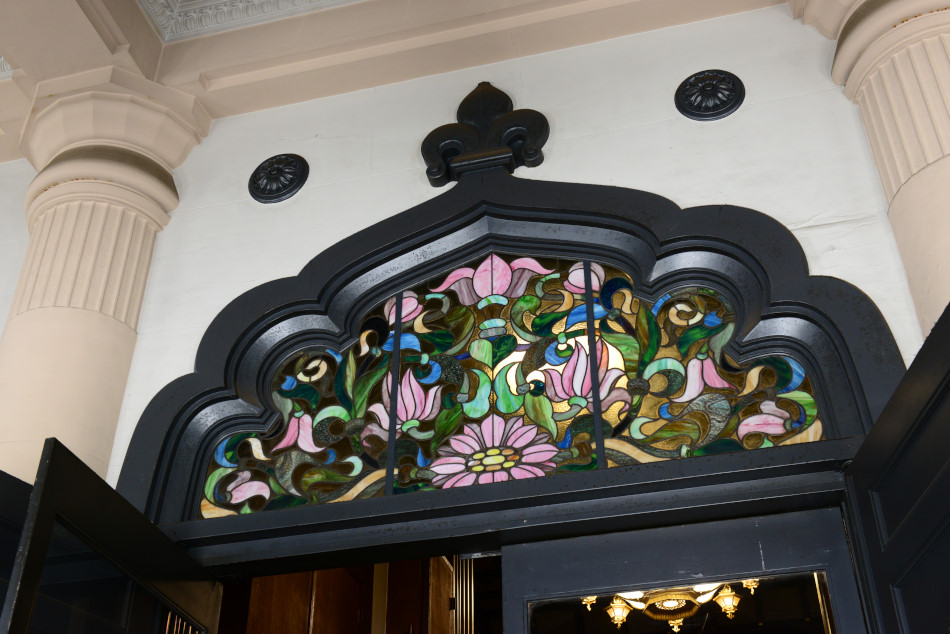 The elegant stain glass transom over the doorway depict the Buddhist icon of lotus flowers.
The elegant stain glass transom over the doorway depict the Buddhist icon of lotus flowers.
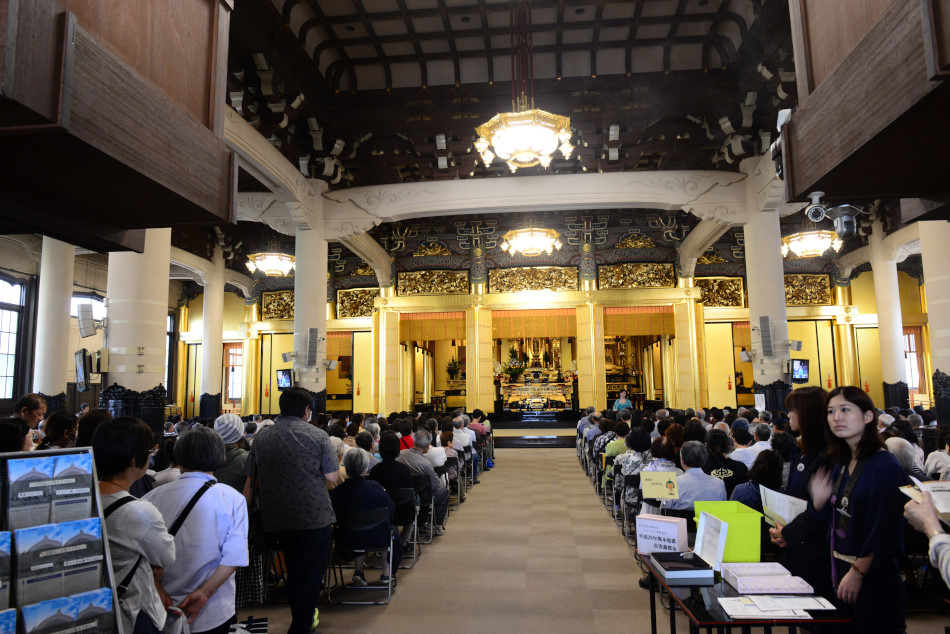 There was a concert inside the main hall of Tsukiji Honganji Temple.
There was a concert inside the main hall of Tsukiji Honganji Temple.
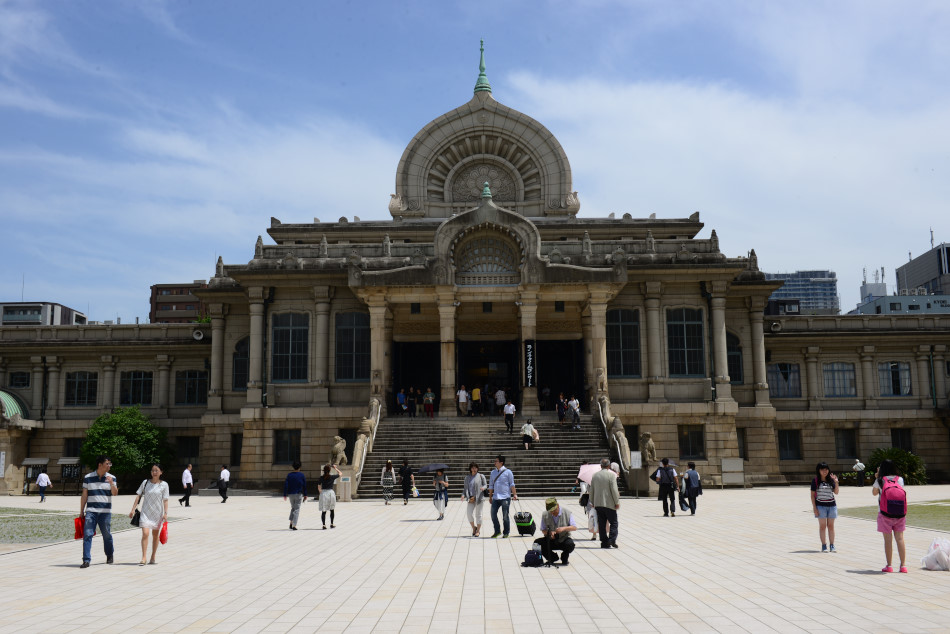 The architecture of Tsukiji Honganji Temple presents the trend of cultural fusion back in early 20th century.
The architecture of Tsukiji Honganji Temple presents the trend of cultural fusion back in early 20th century.
Across the street adjacent to the Tsukiji Honganji Temple, we picked a small lane leading into Tsukiji Jogai Shijo (築地場外市場) or the Outer Market. Encompassing a few blocks adjacent to the Tsukiji Jonai Shijo or the Inner Market, the Outer Market is a popular tourism attraction. Catered for the public, small shops selling all kinds of culinary-related goods from dried seafood to kitchen knives and food stalls offering a wide range of snacks such as sushi and grilled egg, the pedestrianized lanes of the Outer Market is truly a foodie’s paradise. On this piece of reclaimed land (Tsukiji literally means reclaimed land), the eateries and shops of the Outer Market had long been providing a diverse range of food to the people of Tokyo since the Showa Era (1926-1989). The entire Tsukiji Market was in fact a consequence of the Great Kanto Earthquake, which devastated Central Tokyo in 1923 including the Nihonbashi Fish Market. The fish market was relocated to Tsukiji and began to operate in 1935 as one of the three major markets in the city. Already the largest wholesale seafood market in the world, the Tsukiji Market is running out of space for further development. Work of relocating the market has been undergoing for sometime. After several delays, it seems that the market is really moving to its new home in Toyosu (豊洲) this October. But that didn’t affect the bustling Outer Market as these few blocks of shops and eateries (and the loads of tourists) would likely to stay even after the move.
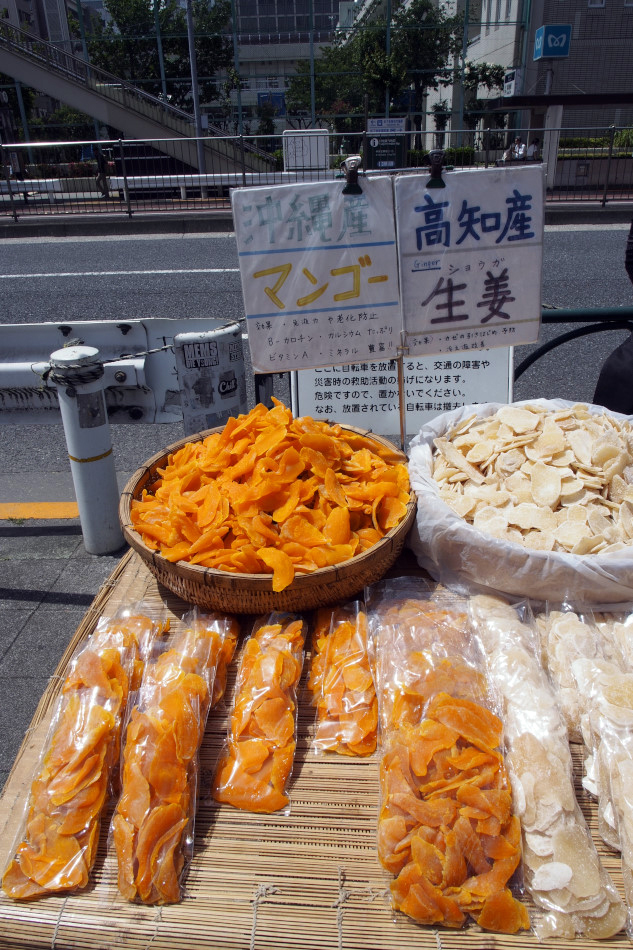 Street vendors appeared blocks away from the Tsukiji Market just outside the Metro Station.
Street vendors appeared blocks away from the Tsukiji Market just outside the Metro Station.
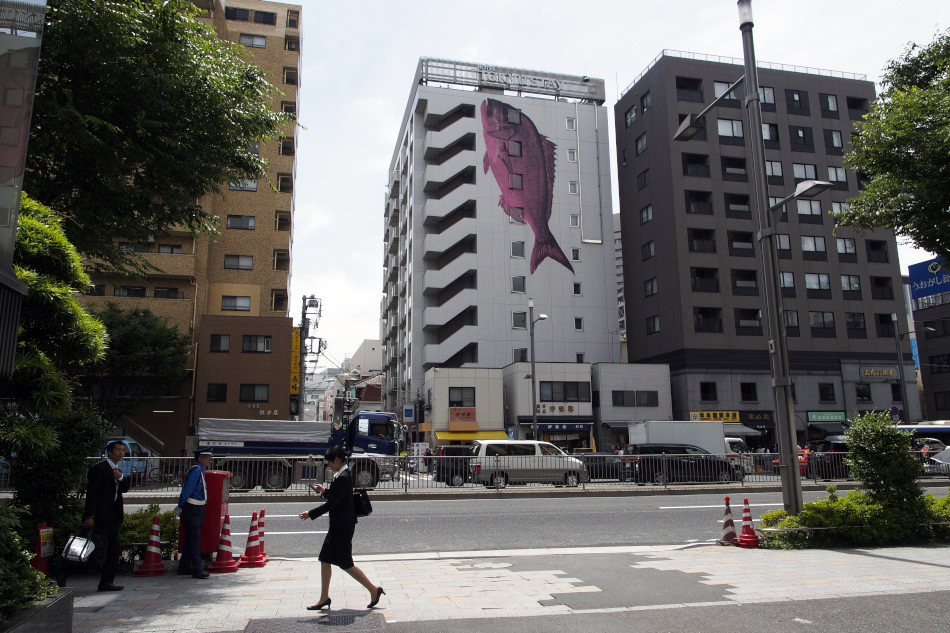 A large fish painted on the building facade probably reminds tourists the direction of the market.
A large fish painted on the building facade probably reminds tourists the direction of the market.
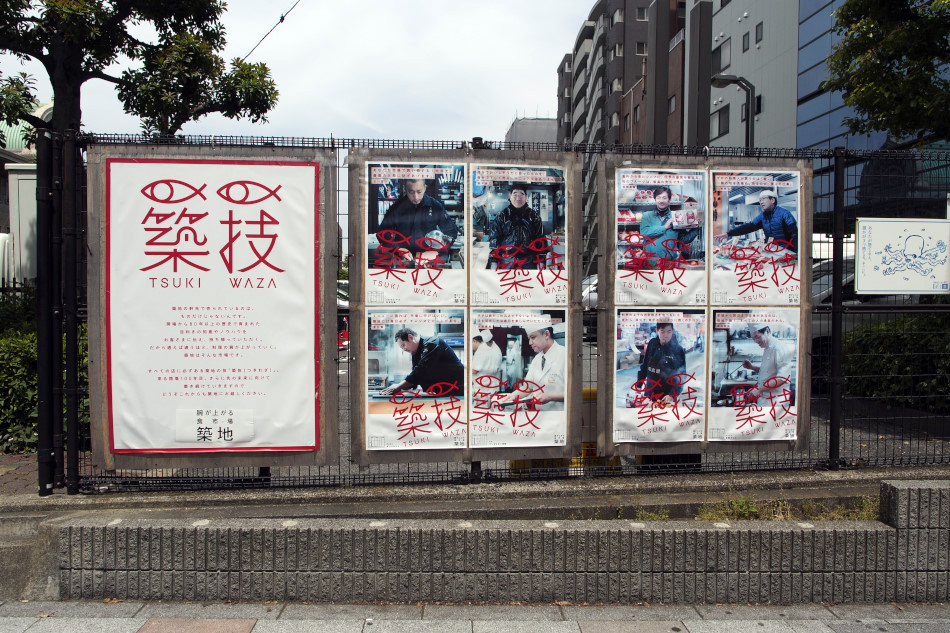 A relatively new market called “Tsuki Waza” will remain at Tsukiji even after the relocation of Tsukiji Inner Market.
A relatively new market called “Tsuki Waza” will remain at Tsukiji even after the relocation of Tsukiji Inner Market.
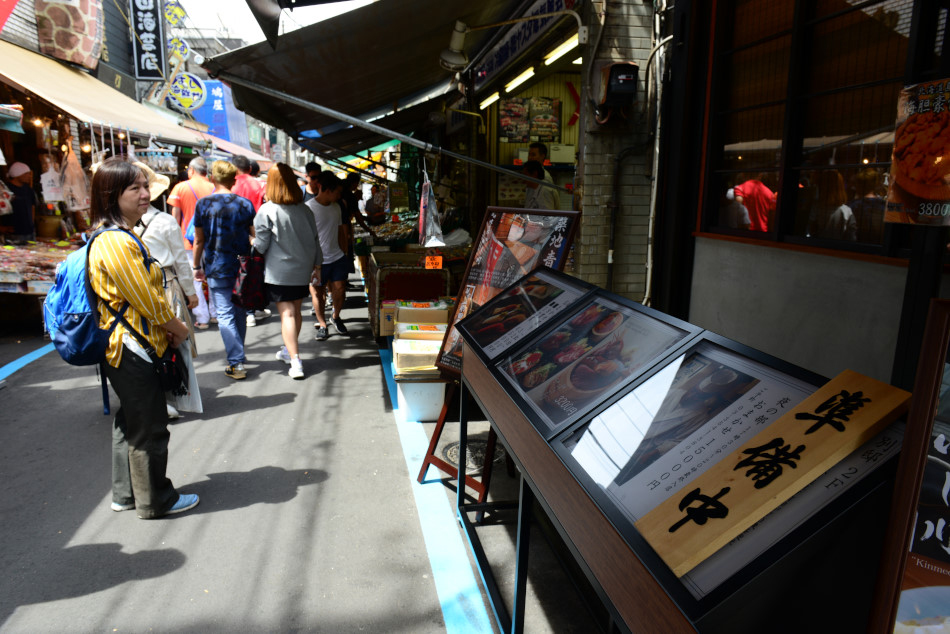 The Tsukiji Outer Market is consisted of a few pedestrianized streets of shops and restaurants.
The Tsukiji Outer Market is consisted of a few pedestrianized streets of shops and restaurants.
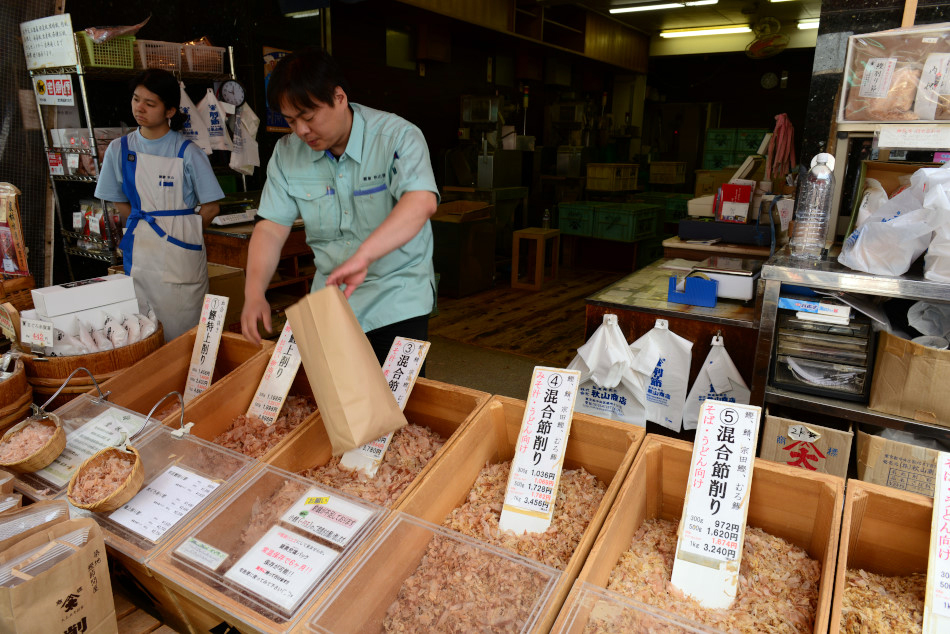 Katsuobushi (鰹節) is the dried, fermented and smoked skipjack tuna or bonito flakes commonly seen in Japanese cuisine.
Katsuobushi (鰹節) is the dried, fermented and smoked skipjack tuna or bonito flakes commonly seen in Japanese cuisine.
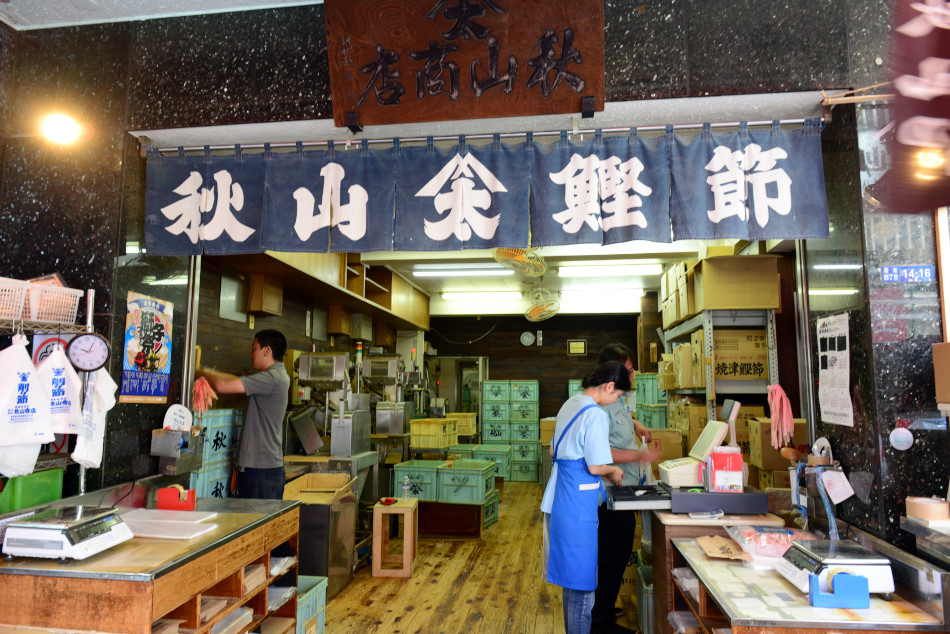 Akiyama Shouten (秋山商店) specializes in katsuobushi. We couldn’t resist but got ourselves 500g of the flakes.
Akiyama Shouten (秋山商店) specializes in katsuobushi. We couldn’t resist but got ourselves 500g of the flakes.
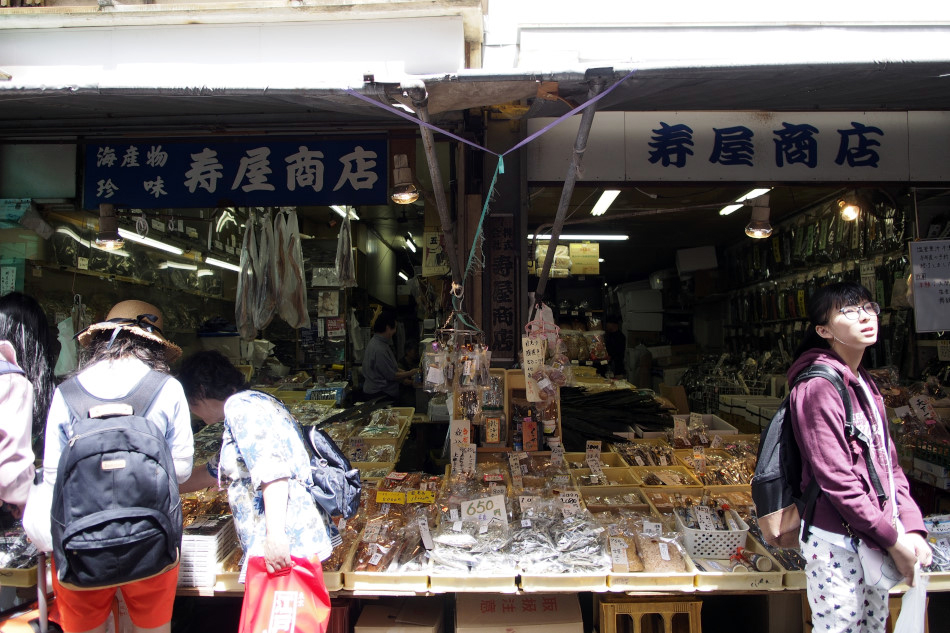 There are many small shops with all kinds of dried seafood and seaweed.
There are many small shops with all kinds of dried seafood and seaweed.
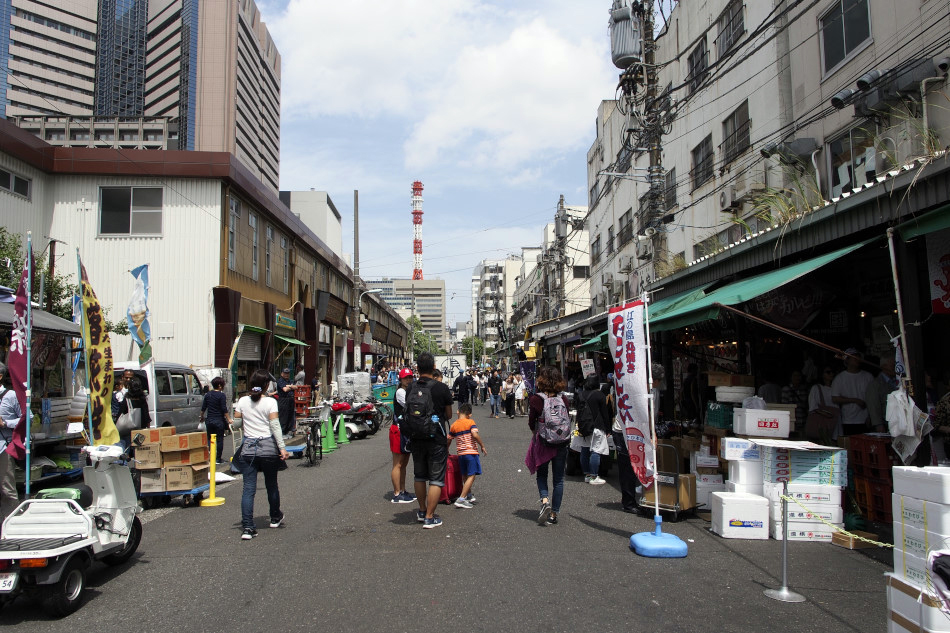 While it only occupies a few blocks, one can easily get disoriented in Tsukiji Outer Market.
While it only occupies a few blocks, one can easily get disoriented in Tsukiji Outer Market.
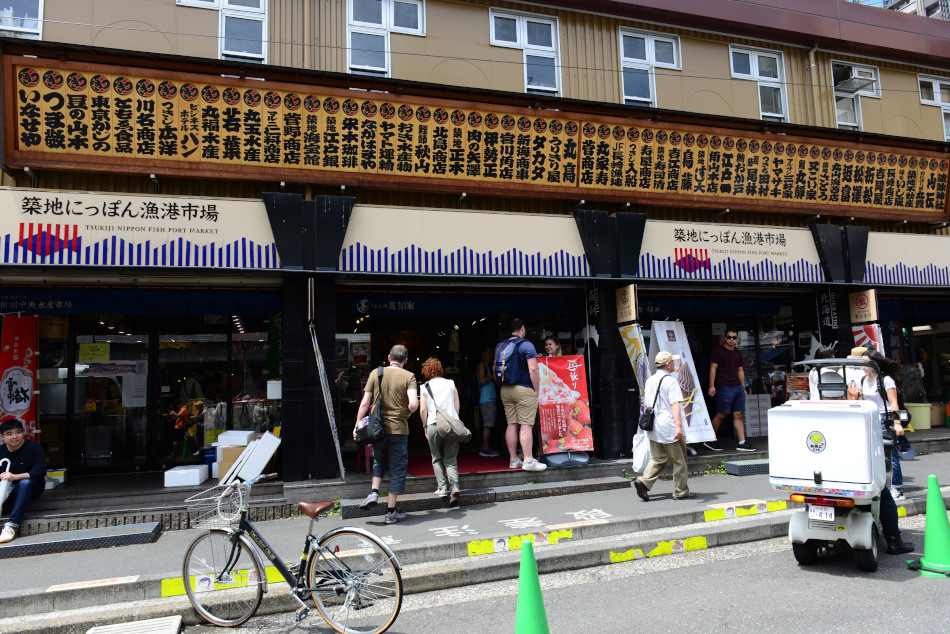 Apart from the small shops, there are also indoor shopping arcades of food stalls.
Apart from the small shops, there are also indoor shopping arcades of food stalls.
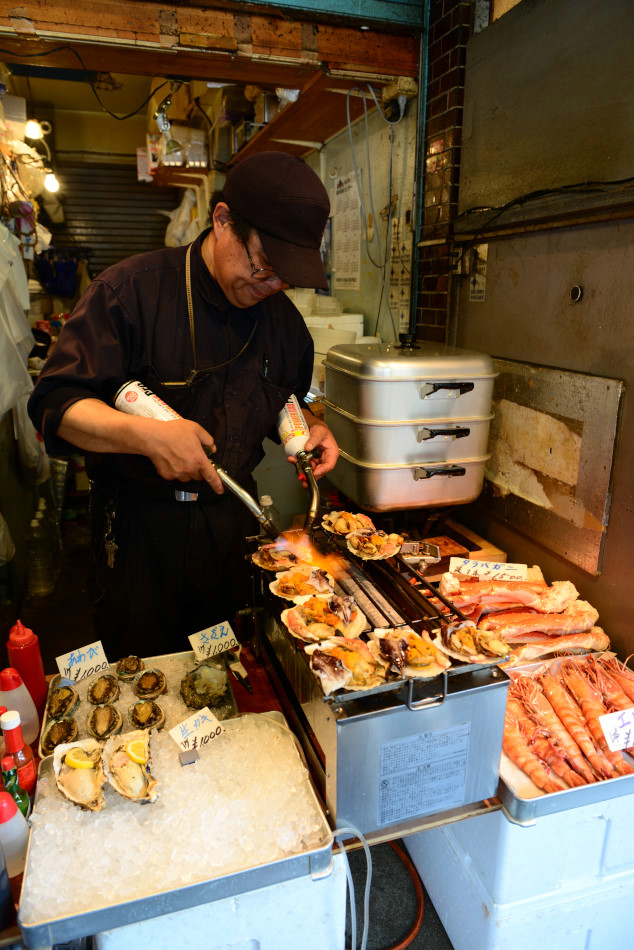 We ended up get our first snacks from a street BBQ vendor.
We ended up get our first snacks from a street BBQ vendor.
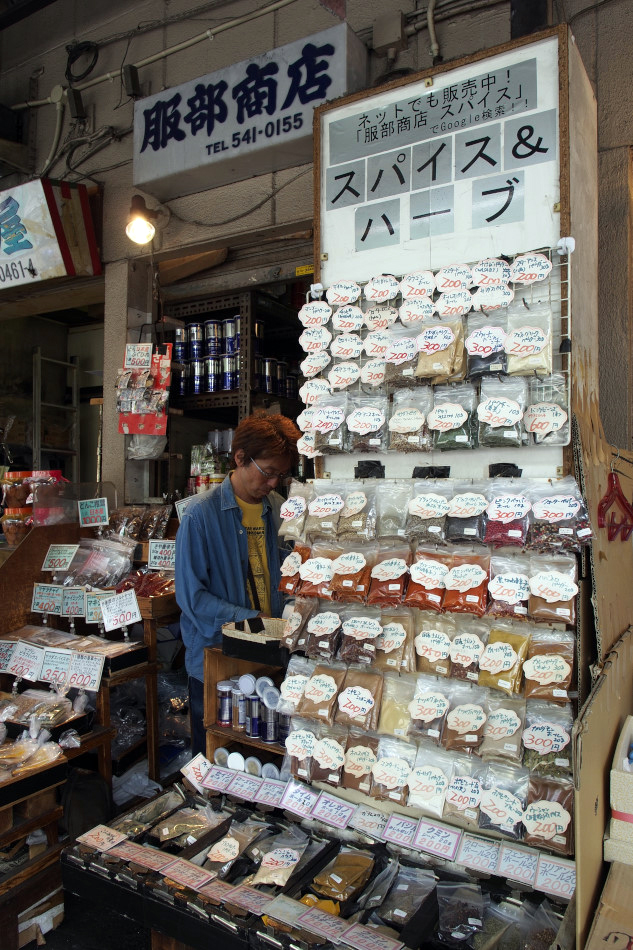 Apart from seafood, spices can also be found in the Outer Market.
Apart from seafood, spices can also be found in the Outer Market.
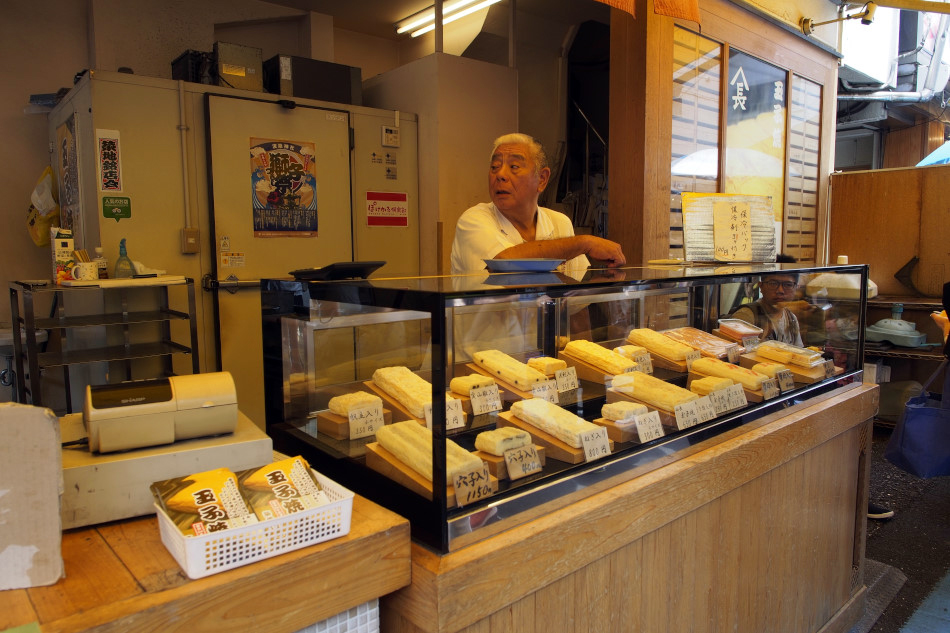 Tamagoyaki (玉子焼き) or grilled omelette is another popular snacks available at Tsukiji.
Tamagoyaki (玉子焼き) or grilled omelette is another popular snacks available at Tsukiji.
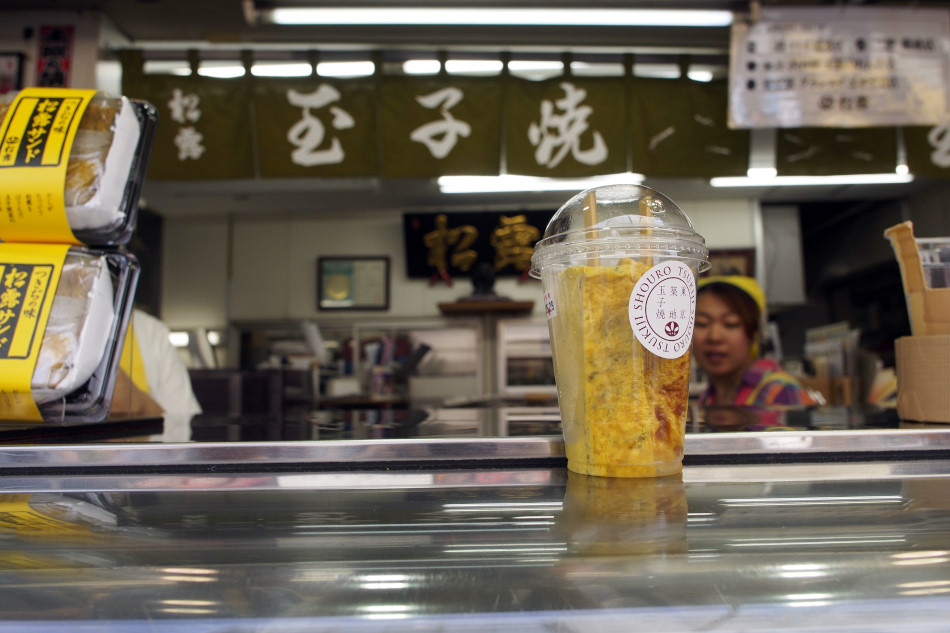 We saw about four to five stalls specialized in tamagoyaki. We tried two of them and they both tasted good.
We saw about four to five stalls specialized in tamagoyaki. We tried two of them and they both tasted good.
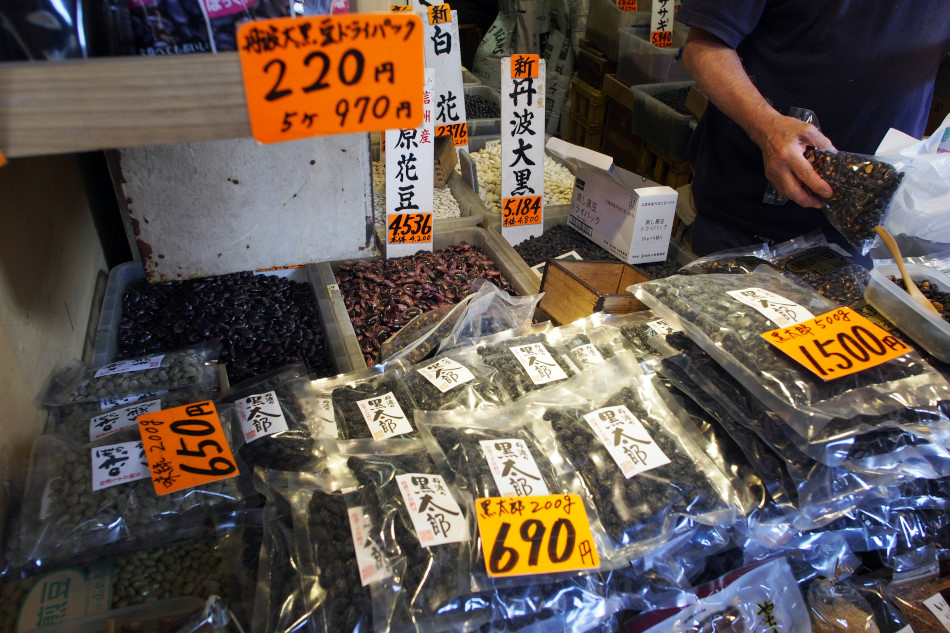 After free tasting of black beans from Kyoto region we ended up get a pack home.
After free tasting of black beans from Kyoto region we ended up get a pack home.
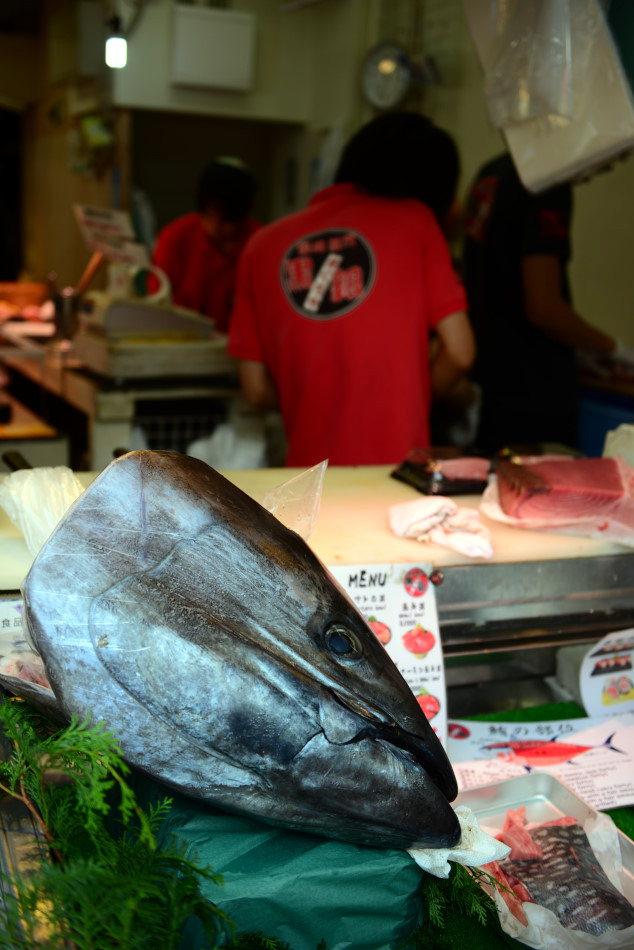 After all, tuna is still the king in Tsukiji. Quite a long queue of people were waiting for fresh tuna sashimi in front of this shop.
After all, tuna is still the king in Tsukiji. Quite a long queue of people were waiting for fresh tuna sashimi in front of this shop.
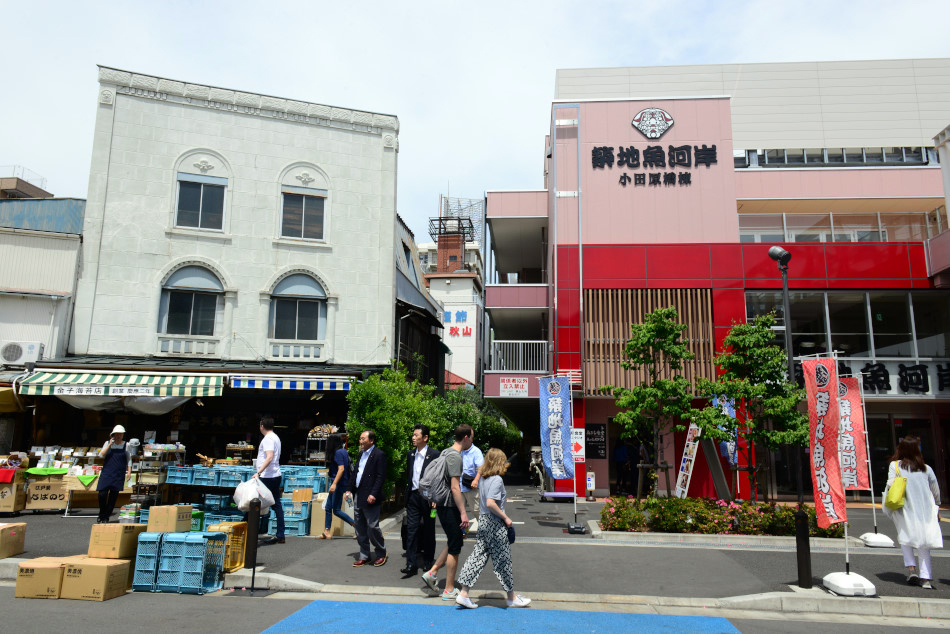 New indoor shopping arcades have been established in recent years at the Outer Market, perhaps as a gesture of confidence for the future of Tsukiji after the relocation of the wholesale Inner Market later this year.
New indoor shopping arcades have been established in recent years at the Outer Market, perhaps as a gesture of confidence for the future of Tsukiji after the relocation of the wholesale Inner Market later this year.
* * *
CHUBU (中部地方) 2018, Japan, 2018.05.25 – 06.03
Introduction
Day 1: Tokyo (東京)
1.1 TSUKIJI OUTER MARKET (築地場外市場)
1.2 TSUKIJI INNER MARKET (築地中央卸売市場)
1.3 MORI ART MUSEUM (森美術館), 21_21 DESIGN SIGHT & CAFE KITSUNE
Day 2: Matsumoto (松本)& Kamikochi (上高地)
2.1 MATSUMOTO CASTLE (松本城), Matsumoto (松本)
2.2 “ALL ABOUT MY LOVE”, Yayoi Kusama’s Exhibition at Matsumoto City Museum of Art (松本市美術館), Matsumoto (松本)
2.3 MATSUMOTO PERFORMING ARTS CENTER (まつもと市民芸術館), Matsumoto (松本)
2.4 FROM MATSUMOTO (松本) TO KAMIKOCHI (上高地)
2.5 ARRIVAL IN KAMIKOCHI (上高地), Chūbu-Sangaku National Park (中部山岳国立公園)
Day 3: Kamikochi (上高地)
3.1 MORNING WALK IN KAMIKOCHI (上高地), Nagano Prefecture (長野県)
3.2 DAKESAWA HIKE (岳沢), Kamikochi (上高地)
Day 4: Kamikochi (上高地) & Shirahone Onsen (白骨温泉)
4.1 TAISHO POND (大正池), Kamikochi (上高地)
4.2 RETREAT IN THE JAPANESE ALPS, Shirahone Onsen (白骨温泉)
4.3 MOMENTS OF ESCAPE, Tsuruya Ryokan (つるや旅館), Shirahone Onsen (白骨温泉)
Day 5: Hida-Takayama (飛騨高山)
5.1 CITY IN THE MOUNTAINS, Hida-Takayama (飛騨高山)
5.2 HIDA BEEF (飛騨牛), Hida-Takayama (飛騨高山)
5.3 SAKE (日本酒) BREWERIES, Hida-Takayama (飛騨高山)
5.4 YOSHIJIMA HOUSE (吉島家住宅), Hida-Takayama (飛騨高山)
5.5 HIGASHIYAMA WALKING COURSE (東山遊歩道), Hida-Takayama (飛騨高山)
Day 6: Hida-Takayama (飛騨高山), Shirakawa-go (白川郷) & Ainokura (相倉)
6.1 MIYAGAWA MORNING MARKET (宮川朝市), Hida-Takayama (飛騨高山), Gifu Prefecture (岐阜県)
6.2 OGIMACHI IN THE RAIN, Shirakawa-go (白川郷), Gifu Prefecture (岐阜県)
6.3 SOBA, TEMPLE & LOOKOUT, Shirakawa-go (白川郷)
6.4 RAINY AFTERNOON IN AINOKURA (相倉), Gokayama (五箇山)
6.5 GASSHO MINSHUKU, FLOWER BEDS & RICE PADDY FIELDS, Ainokura (相倉), Gokayama (五箇山)
6.6 CROAKING FROGS AND MOONLIGHT REFLECTIONS, Gokayama (五箇山)
Day 7: Kanazawa (金沢)
7.1 DEPARTURE IN THE RAIN, Ainokura (相倉) to Kanazawa (金沢)
7.2 A SEAFOOD PARADISE – OMICHO MARKET (近江町市場)
7.3 D T Suzuki Museum (鈴木大拙館)
7.4 Kenroku-en Garden (兼六園)
7.5 Oyama Shrine (尾山神社) and Nagamachi Samurai District (長町)
7.6 Nomura Samurai House (武家屋敷跡 野村家), Nagamachi Samurai District (長町)
7.7 Sushi Ippei (一平鮨), Katamachi (片町)
Day 8: Kanazawa, Ishikawa Prefecture (金沢, 石川県)
8.1 Iki Iki Tei (いきいき亭) and Higashide Coffee (東出珈琲店), Omicho Market (近江町市場)
8.2 21st Century Museum of Contemporary Art (21世紀美術館)
8.3 Kazuemachi District (主計町茶屋街)
8.4 Higashi Chaya District (東山ひがし茶屋街)
8.5 Kaga Yuzen Toro Nagashi (加賀友禅燈ろう流し), Asano River (浅野川)
8.6 AFTERMATH OF KAGA YUZEN TORO NAGASHI (加賀友禅燈ろう流し)
Day 9 & 10: Tokyo (東京)
9.1 Marunouchi (丸の内) & Nihonbashi (日本橋)
10.1 OEDO ANTIQUE MARKET (大江戸骨董市), Tokyo Forum (東京国際フォーラム)
10.2 FARMER’S MARKET, United Nations University (東京国連大学), Aoyama (青山)
DAY 6 (1/3): WORDO COURTYARD (吾爾朵大宅院), Shigatse (གཞིས་ཀ་རྩེ་གྲོང 日喀則), Tibet (西藏), 2017.09.21

Shigatse (གཞིས་ཀ་རྩེ་གྲོང་ཁྱེར། 日喀則), also named Xigatse, is the traditional seat of the Panchen Lama, and an important base for travelers to visit the Mount Everest Base Camp and the nearby Sakya Monastery. Lying in the middle of the Friendship Highway between Nepal and China, Shigatse is Tibet’s second largest city. We arrived at Shigatse at around 8pm. After checking in at Sakya Lhundup Palace Hotel, we went for a walk in the area to look for a place to eat. The area was not particularly lively, despite we were just 300m from the Summer Palace of Panchen Lama and 500m from Tashilhunpo Monastery (བཀྲ་ཤིས་ལྷུན་པོ་ 扎什倫布寺), the largest monastery in the city. On the upper level of a two-storey building across the street from our hotel, we saw the soft lighting and lively ambience of what looked like a decent restaurant.
 We followed a passageway at the end of the building into a tranquil courtyard with colourful flags, lush green plant pots and patio tables. We headed up a stair beside a large kitchen and arrived at a large dining area known as Wordo Courtyard.
We followed a passageway at the end of the building into a tranquil courtyard with colourful flags, lush green plant pots and patio tables. We headed up a stair beside a large kitchen and arrived at a large dining area known as Wordo Courtyard.
 A small group of musicians were performing traditional music while staff were busy bringing out all kinds of interesting dishes to the tables.
A small group of musicians were performing traditional music while staff were busy bringing out all kinds of interesting dishes to the tables.
 The restaurant was decently decorated in traditional Tibetan style.
The restaurant was decently decorated in traditional Tibetan style.
 We ordered three dishes and yogi berry tea.
We ordered three dishes and yogi berry tea.
 Yak meat was a Tibetan specialty.
Yak meat was a Tibetan specialty.
 The music performance at the central stage proved popular among the audience.
The music performance at the central stage proved popular among the audience.
 At Wordo Courtyard, we enjoyed a relaxing night of fine Tibetan food. After dinner, we returned to the hotel for an early rest. The next day would be another long day on the road, taking us to the highest point of our Tibetan journey, the Mount Everest Base Camp.
At Wordo Courtyard, we enjoyed a relaxing night of fine Tibetan food. After dinner, we returned to the hotel for an early rest. The next day would be another long day on the road, taking us to the highest point of our Tibetan journey, the Mount Everest Base Camp.
* * *
More blog posts on Tibet 2017:
JOURNEY ABOVE THE CLOUDS, Tibet 2017 (西藏之旅2017)
DAY 1: TOUCHDOWN ON THE ROOF OF THE WORLD, Lhasa
DAY 1: TRICHANG LABRANG HOTEL (赤江拉讓藏式賓館), Lhasa
DAY 1: KORA AT BARKHOR STREET (八廓街), Lhasa
DAY 2: FIRST GLIMPSE OF POTALA (布達拉宮), Lhasa
DAY 2: KORA OF DREPUNG MONASTERY (哲蚌寺), Lhasa
DAY 2: DREPUNG MONASTERY (哲蚌寺), Lhasa
DAY 2: JOKHANG MONASTERY (大昭寺), Lhasa
DAY 2 : SPINN CAFE (風轉咖啡館), Lhasa
DAY 2: NIGHT VIEW OF POTALA (布達拉宮), Lhasa
DAY 3: POTALA PALACE (布達拉宮), Lhasa
DAY 3: SERA MONASTERY (色拉寺), Lhasa
Day 4: KORA OF GANDEN MONASTERY (甘丹寺), Lhasa
Day 4: GANDEN MONASTERY (甘丹寺), Lhasa
DAY 4: TEA HOUSE AND FAMILY RESTAURANT, Lhasa
DAY 5: ON THE ROAD IN TIBET
DAY 5: MORNING IN SHANNAN (山南)
DAY 5: SAMYE MONASTERY (桑耶寺), Shannan
DAY 5: SAMYE TOWN (桑耶鎮), Shannan
DAY 6: YAMDROK LAKE (羊卓雍錯)
DAY 6: PALCHO MONASTERY (白居寺), Gyantse
DAY 6: WORDO COURTYARD (吾爾朵大宅院), Shigatse
DAY 7: ROAD TO EVEREST BASE CAMP (珠峰大本營)
DAY 7: EVEREST BASE CAMP (珠峰大本營)
DAY 7: STARRY NIGHT, Everest Base Camp
DAY 8: PANG LA PASS (加烏拉山口), Mount Everest Road
DAY 8: SAKYA MONASTERY (薩迦寺)
DAY 9: TASHI LHUNPO MONASTERY, (扎什倫布寺) Shigatse
DAY 9: ROAD TO NAMTSO LAKE (納木錯)
DAY 9: EVENING AT NAMTSO LAKE (納木錯)
DAY 10: SUNRISE AT NAMTSO LAKE (納木錯)
DAY 10: LAST DAY IN LHASA, Tibet
EPILOGUE: FACES OF LHASA, Tibet
DAY 5 (4/4): SAMYE TOWN (桑耶鎮), Shannan (山南), Tibet (西藏), 2017.09.20

Before sunset, we walked out Samye Monastery to the main plaza of Samye Town. Listed as one of China’s special villages, the home of the splendid Samye Monastery aims to further develop its tourism industry. Simple guesthouses, convenient stores and eateries mushroomed around the monastery and along the main street. Despite Samye Monastery is on the itinerary of many tourists, most travelers prefer to stay at a bigger city or town such as Tsedang or even Lhasa. As a result, Samye remains a quiet community after all day-trippers left. We stayed the night at Samye Monastery Guesthouse, probably the biggest accommodation establishment in town. For dinner and breakfast, we chose Friendship Snowland Restaurant at the main street just outside Samye Monastery. The plaza and main street outside Samye Monastery turned out to be a great place for people watching: balloon vendor interacting with a local family, laundry powder vendor giving away plastic wash basins to customers, a flock of sheep passing by… our memories of sleepy Samye Town.
 Outside the main gate of Samye Monastery, the plaza and main street was a great place for people watching.
Outside the main gate of Samye Monastery, the plaza and main street was a great place for people watching.
 After the tourists and pilgrims left, the Samye Monastery returned to tranquility.
After the tourists and pilgrims left, the Samye Monastery returned to tranquility.
 We wandered a bit on the main street to pick a restaurant for dinner.
We wandered a bit on the main street to pick a restaurant for dinner.
 Locals gathered at the vendor selling all kinds of household goods. The vendor gave away plastic wash basins to customers who bought her laundry powder.
Locals gathered at the vendor selling all kinds of household goods. The vendor gave away plastic wash basins to customers who bought her laundry powder.
 Vendor selling colourful balloons at his auto rickshaw captured much attention in front of the monastery.
Vendor selling colourful balloons at his auto rickshaw captured much attention in front of the monastery.
 Local eateries dotted along the main street, but most of them were empty as we looked for a place for dinner.
Local eateries dotted along the main street, but most of them were empty as we looked for a place for dinner.
 To us, Samye was pretty laid back, including its sleepy dogs.
To us, Samye was pretty laid back, including its sleepy dogs.
 We finally chose the guidebook-recommended Friendship Snowland Restaurant for supper.
We finally chose the guidebook-recommended Friendship Snowland Restaurant for supper.
 At the restaurant, we were greeted by friendly staff and two cute puppies.
At the restaurant, we were greeted by friendly staff and two cute puppies.
 We were the only customers at the restaurant. The interior was decorated in traditional Tibetan style.
We were the only customers at the restaurant. The interior was decorated in traditional Tibetan style.
 Like the monasteries, the interior of Tibetan restaurants are also filled with vivid colours.
Like the monasteries, the interior of Tibetan restaurants are also filled with vivid colours.
 Samye Monastery and Yungbulakang Palace are probably the most important landmark in Shannan Prefecture.
Samye Monastery and Yungbulakang Palace are probably the most important landmark in Shannan Prefecture.
 Any meal in Tibet should start with Tibetan sweet tea.
Any meal in Tibet should start with Tibetan sweet tea.
 The food was surprisingly good. We enjoyed a taste of Tibetan family cuisine with three local dishes and a bowl of vegetable soup.
The food was surprisingly good. We enjoyed a taste of Tibetan family cuisine with three local dishes and a bowl of vegetable soup.
 Outside the restaurant, a flock of sheep walked by the main street.
Outside the restaurant, a flock of sheep walked by the main street.
 After dinner, we picked up a few bottles of water and followed the enclosure wall of Samye Monastery back to our hotel.
After dinner, we picked up a few bottles of water and followed the enclosure wall of Samye Monastery back to our hotel.
* * *
More blog posts on Tibet 2017:
JOURNEY ABOVE THE CLOUDS, Tibet 2017 (西藏之旅2017)
DAY 1: TOUCHDOWN ON THE ROOF OF THE WORLD, Lhasa
DAY 1: TRICHANG LABRANG HOTEL (赤江拉讓藏式賓館), Lhasa
DAY 1: KORA AT BARKHOR STREET (八廓街), Lhasa
DAY 2: FIRST GLIMPSE OF POTALA (布達拉宮), Lhasa
DAY 2: KORA OF DREPUNG MONASTERY (哲蚌寺), Lhasa
DAY 2: DREPUNG MONASTERY (哲蚌寺), Lhasa
DAY 2: JOKHANG MONASTERY (大昭寺), Lhasa
DAY 2 : SPINN CAFE (風轉咖啡館), Lhasa
DAY 2: NIGHT VIEW OF POTALA (布達拉宮), Lhasa
DAY 3: POTALA PALACE (布達拉宮), Lhasa
DAY 3: SERA MONASTERY (色拉寺), Lhasa
Day 4: KORA OF GANDEN MONASTERY (甘丹寺), Lhasa
Day 4: GANDEN MONASTERY (甘丹寺), Lhasa
DAY 4: TEA HOUSE AND FAMILY RESTAURANT, Lhasa
DAY 5: ON THE ROAD IN TIBET
DAY 5: MORNING IN SHANNAN (山南)
DAY 5: SAMYE MONASTERY (桑耶寺), Shannan
DAY 5: SAMYE TOWN (桑耶鎮), Shannan
DAY 6: YAMDROK LAKE (羊卓雍錯)
DAY 6: PALCHO MONASTERY (白居寺), Gyantse
DAY 6: WORDO COURTYARD (吾爾朵大宅院), Shigatse
DAY 7: ROAD TO EVEREST BASE CAMP (珠峰大本營)
DAY 7: EVEREST BASE CAMP (珠峰大本營)
DAY 7: STARRY NIGHT, Everest Base Camp
DAY 8: PANG LA PASS (加烏拉山口), Mount Everest Road
DAY 8: SAKYA MONASTERY (薩迦寺)
DAY 9: TASHI LHUNPO MONASTERY, (扎什倫布寺) Shigatse
DAY 9: ROAD TO NAMTSO LAKE (納木錯)
DAY 9: EVENING AT NAMTSO LAKE (納木錯)
DAY 10: SUNRISE AT NAMTSO LAKE (納木錯)
DAY 10: LAST DAY IN LHASA, Tibet
EPILOGUE: FACES OF LHASA, Tibet
DAY 2 (2/4): HIGASHI-YAMA RESTAURANT, near Nakameguro (中目黒), Tokyo, Japan, 2017.06.15

After Ebisu, our next stop was Higashi-yama Restaurant in Nakameguro (中目黒). In a quiet residential street in Higashi-yama 15 minutes walk from Nakameguro Station, Higashi-yama Restaurant was well hidden from the street. We came across this restaurant from our online research. We were attracted by the minimalist food presentation and the atmospheric interior setting. We reserved a table for lunch through their website two weeks prior to our departure. After the traditional Kaiseki experience at Ueno Park the day before, we were hoping that Higashi-yama would offer us a contemporary interpretation of Japanese cuisine. “A detached house located in Higashi-yama, Meguro-ku, Tokyo, away from the clamor of the city, and be a place where people meet and discuss what matters most to them, a place where new communication is born.” According to the description on their website, the story of this tranquil spot in Tokyo’s Higashi-yama where people come and chat and enjoy modern Japanese food all began in 1998. Our experience of Higashi-yama began at a narrow stairway off the street.
 A flight of steps led us away from a residential street up to a hidden courtyard.
A flight of steps led us away from a residential street up to a hidden courtyard.
 Well hidden from the street, the entrance courtyard offers a serene buffer between the street and the restaurant. The courtyard served well to decant our souls of hastiness and calm down our hearts (as we were almost late for the booking).
Well hidden from the street, the entrance courtyard offers a serene buffer between the street and the restaurant. The courtyard served well to decant our souls of hastiness and calm down our hearts (as we were almost late for the booking).
 The interior of the restaurant is simple and unpretentious, with traditional Japanese dark timber millwork in a bright and simple setting.
The interior of the restaurant is simple and unpretentious, with traditional Japanese dark timber millwork in a bright and simple setting.
 A tall shelf displaying wine and sake anchors one corner of the interior.
A tall shelf displaying wine and sake anchors one corner of the interior.
 Wood is such an important material in Japanese culture, from table, chopsticks to chopstick holders.
Wood is such an important material in Japanese culture, from table, chopsticks to chopstick holders.
 The appetizer consisted of eight ingredients fresh to the season.
The appetizer consisted of eight ingredients fresh to the season.
 Both the taste and the beautiful presentation of the food matched with the overall ambience of the restaurant.
Both the taste and the beautiful presentation of the food matched with the overall ambience of the restaurant.
 One of the main dish we ordered was the grilled snapper.
One of the main dish we ordered was the grilled snapper.
 The other main we chose was the tempura seasonal ingredients.
The other main we chose was the tempura seasonal ingredients.
 After the tasty appetizers and main dishes, we were led by the staff downstairs via a beautiful and modern stair.
After the tasty appetizers and main dishes, we were led by the staff downstairs via a beautiful and modern stair.
 The water feature by the stairwell seems like a contemporary interpretation of a chōzubachi water basin in front of a zen tea house.
The water feature by the stairwell seems like a contemporary interpretation of a chōzubachi water basin in front of a zen tea house.
 We were led to a comfortable sitting area for dessert.
We were led to a comfortable sitting area for dessert.
 Mocha pudding and mango ice-cream came went well with hot Japanese tea.
Mocha pudding and mango ice-cream came went well with hot Japanese tea.
 An interesting copper sculpture was mounted on the wall over our head.
An interesting copper sculpture was mounted on the wall over our head.
 Opposite to our sitting area, a staff was preparing tea and chatting with another customer by a high counter.
Opposite to our sitting area, a staff was preparing tea and chatting with another customer by a high counter.
 After dessert, we paid the bill and were led to exit the building through a copper door directly back to the street. Overall, Higashi-yama Restaurant offered us a fine experience, with good food to satisfy our taste-buds and a zen and minimalist environment to sooth our souls.
After dessert, we paid the bill and were led to exit the building through a copper door directly back to the street. Overall, Higashi-yama Restaurant offered us a fine experience, with good food to satisfy our taste-buds and a zen and minimalist environment to sooth our souls.


 Bangdacang Compound (邦達倉大院) was only a few minute walk from our hotel.
Bangdacang Compound (邦達倉大院) was only a few minute walk from our hotel. “Our Tibetan Restaurant” (咱們的藏餐館) is located in the courtyard of the Bangdacang Compound (邦達倉大院).
“Our Tibetan Restaurant” (咱們的藏餐館) is located in the courtyard of the Bangdacang Compound (邦達倉大院). We ordered yak meat and pancake.
We ordered yak meat and pancake. The mushroom momos (Tibetan dumplings) were good and deserved a longer waiting time.
The mushroom momos (Tibetan dumplings) were good and deserved a longer waiting time. The forecourt of Jokhang is always busy with pilrims.
The forecourt of Jokhang is always busy with pilrims. Inside Jokhang, the first courtyard beyond the ticket entrance was rather peaceful.
Inside Jokhang, the first courtyard beyond the ticket entrance was rather peaceful. We walked around the inner perimeter of the central courtyard to admire the wall paintings.
We walked around the inner perimeter of the central courtyard to admire the wall paintings. It was late in the afternoon with few tourists.
It was late in the afternoon with few tourists. Looking up, we could see parts of the golden ornament on the roof of Jokhang.
Looking up, we could see parts of the golden ornament on the roof of Jokhang. At one side of the courtyard, there was a seat reserved for the Dalai Lama.
At one side of the courtyard, there was a seat reserved for the Dalai Lama. Beautiful decorations could be seen everywhere in the building.
Beautiful decorations could be seen everywhere in the building. We walked around the central courtyard to check out the wall paintings.
We walked around the central courtyard to check out the wall paintings. The wall paintings had undergone extensive restorations in recent years.
The wall paintings had undergone extensive restorations in recent years. Beyond the main hall were living quarters for monks.
Beyond the main hall were living quarters for monks. After walking around the courtyard, we entered the main prayer hall through its old entrance door. Unfortunate photography was not allowed in the interior.
After walking around the courtyard, we entered the main prayer hall through its old entrance door. Unfortunate photography was not allowed in the interior. On the roof terrace, we were overwhelmed by the extensive golden decorations.
On the roof terrace, we were overwhelmed by the extensive golden decorations. A long courtyard near the main hall indicated the start of monk living quarter.
A long courtyard near the main hall indicated the start of monk living quarter. On the roof terrace, the golden roof and decorations were clearly shown.
On the roof terrace, the golden roof and decorations were clearly shown. Details of the golden ornaments on the roof.
Details of the golden ornaments on the roof. After visiting Jokhang, we walked over to the monastery’s forecourt where devoted pilgrims performed all kinds of worshiping rituals.
After visiting Jokhang, we walked over to the monastery’s forecourt where devoted pilgrims performed all kinds of worshiping rituals.